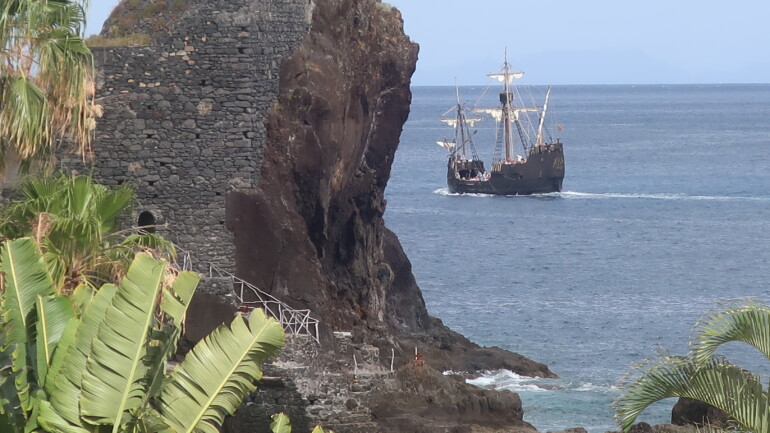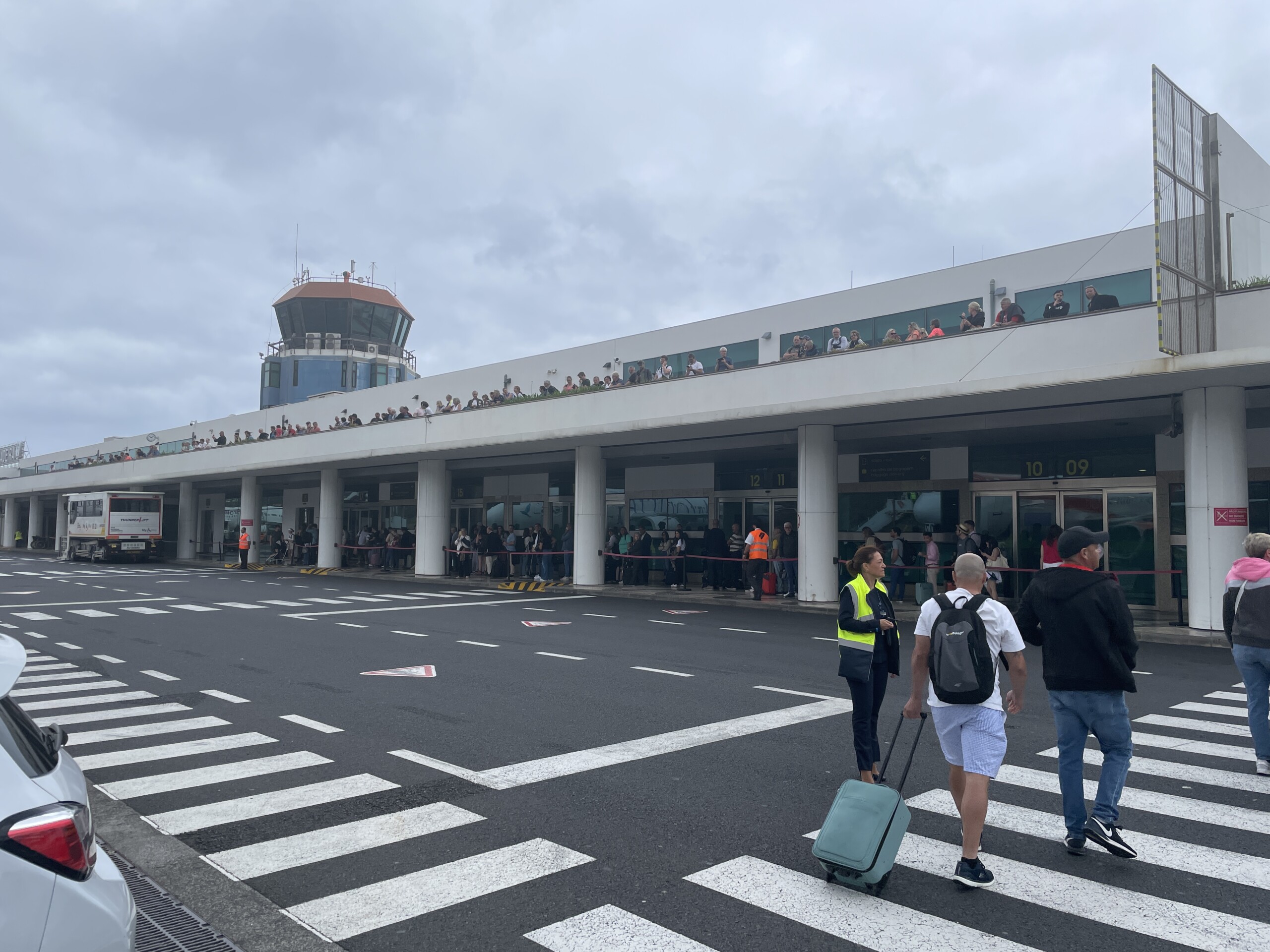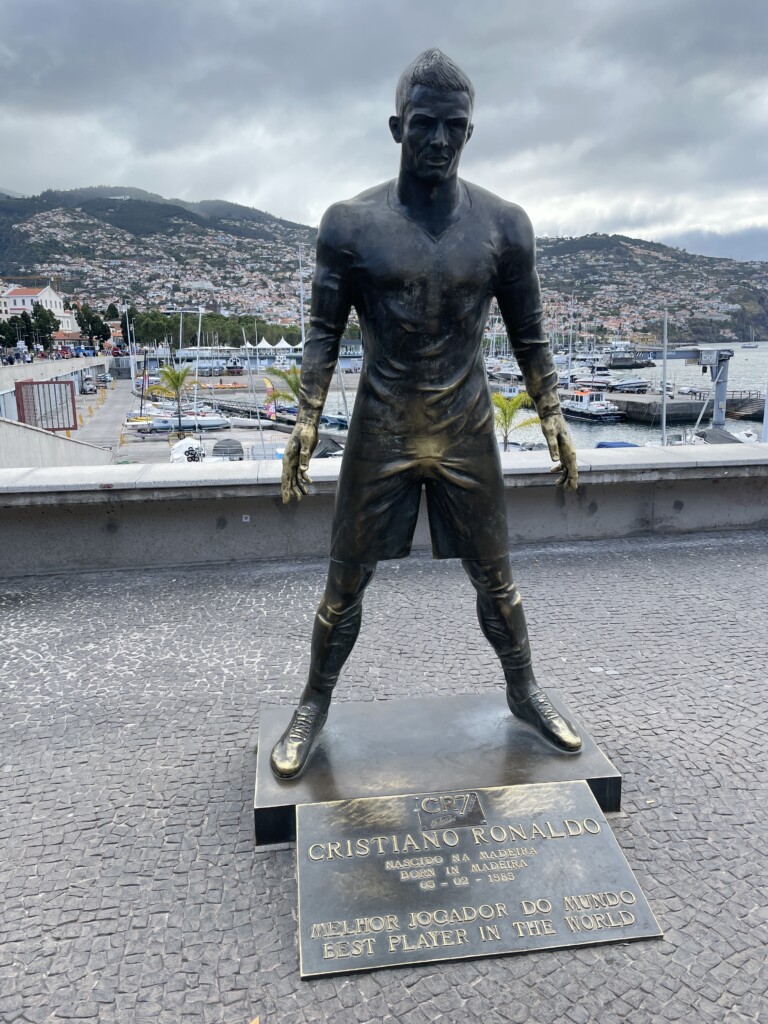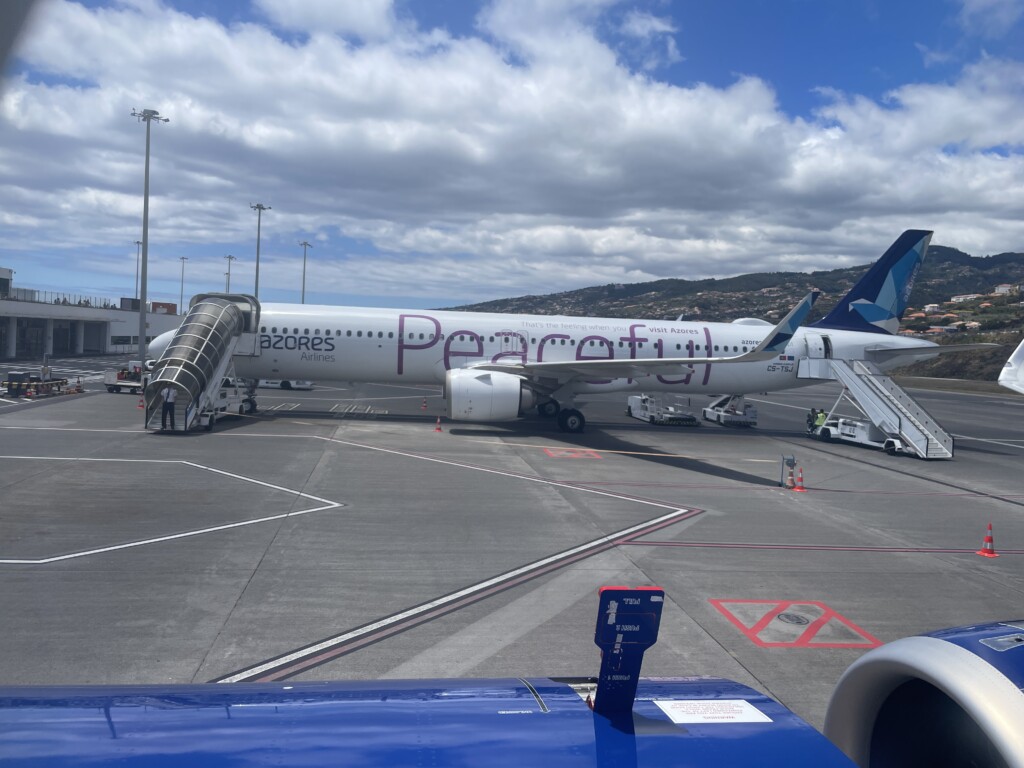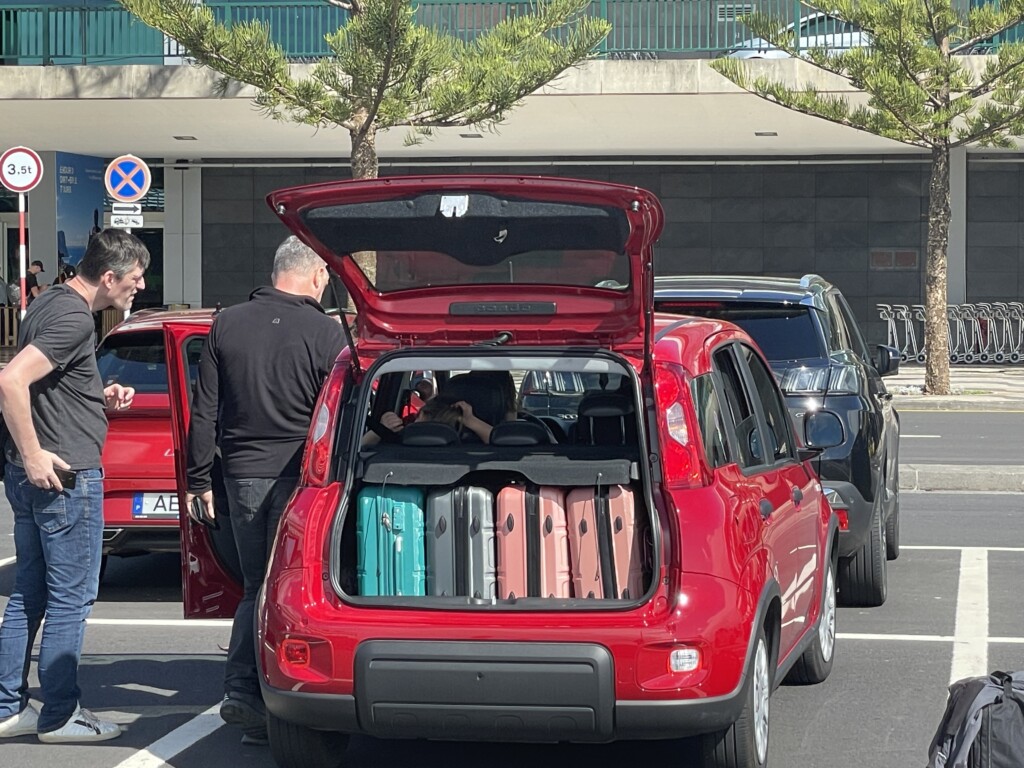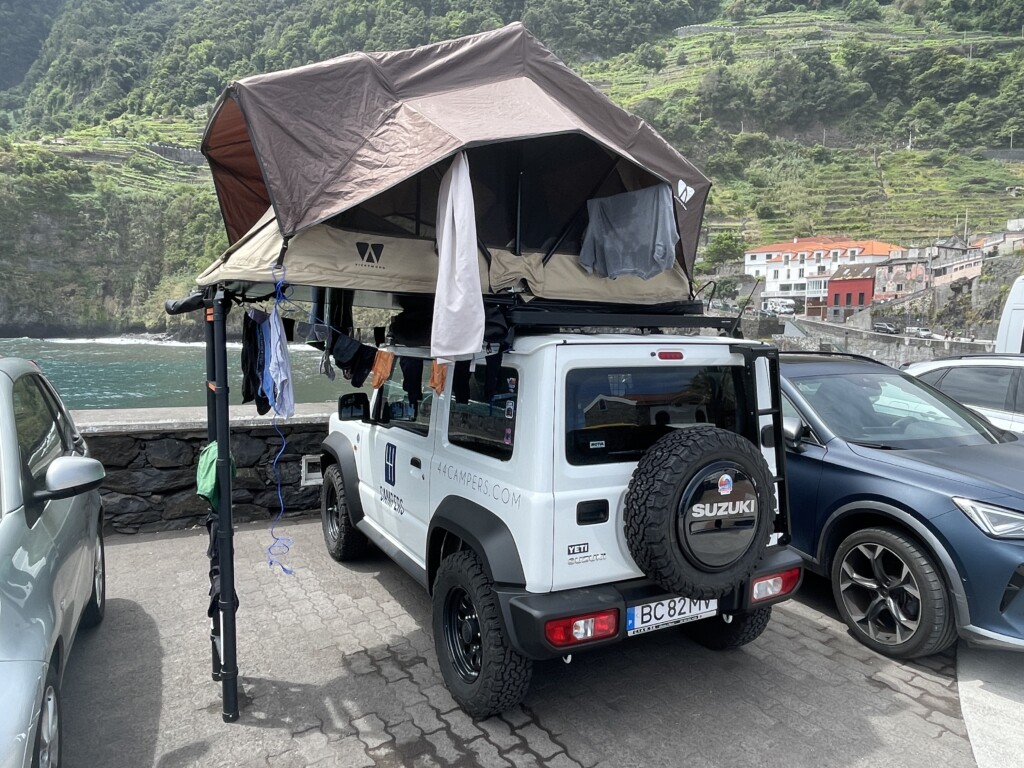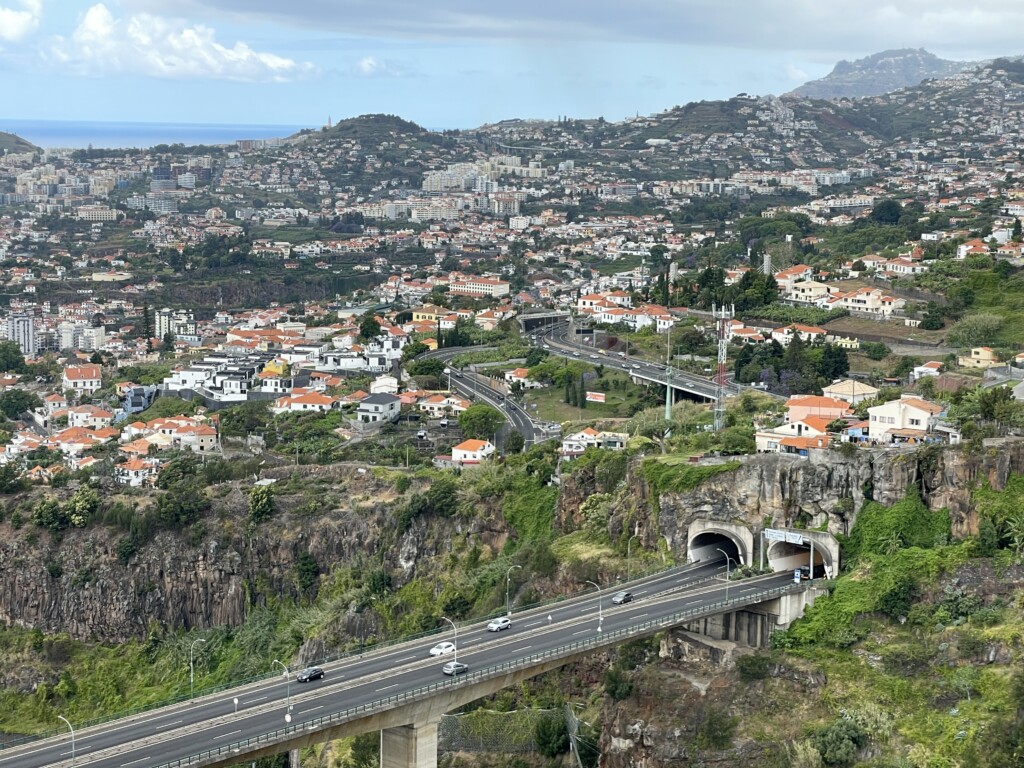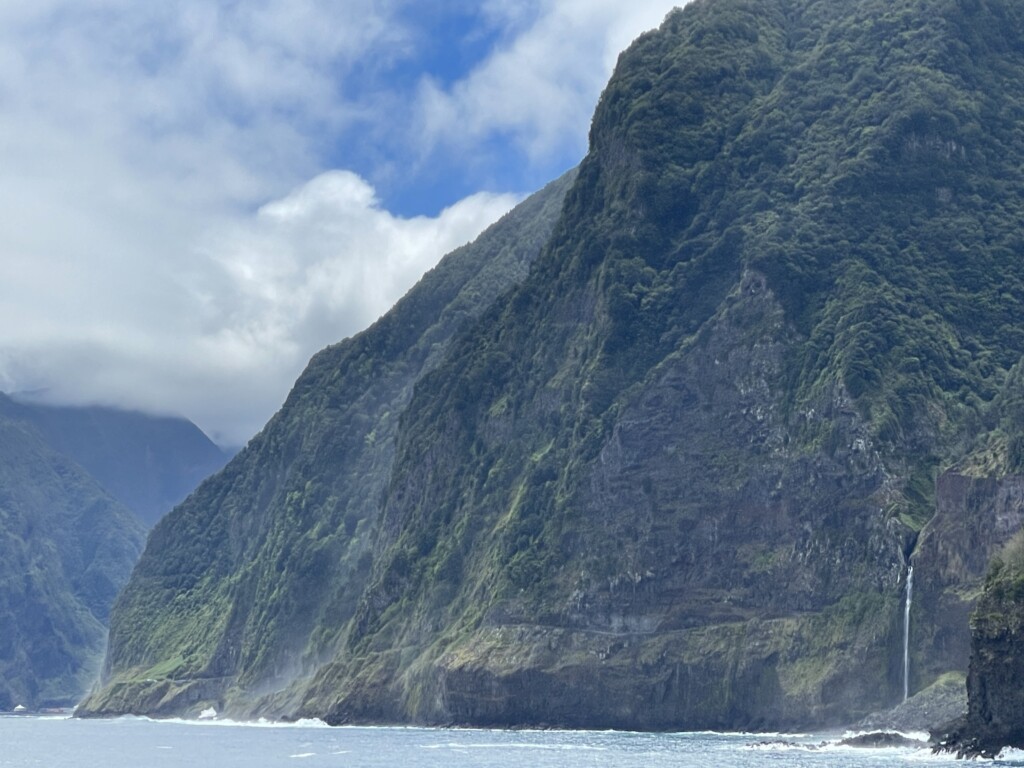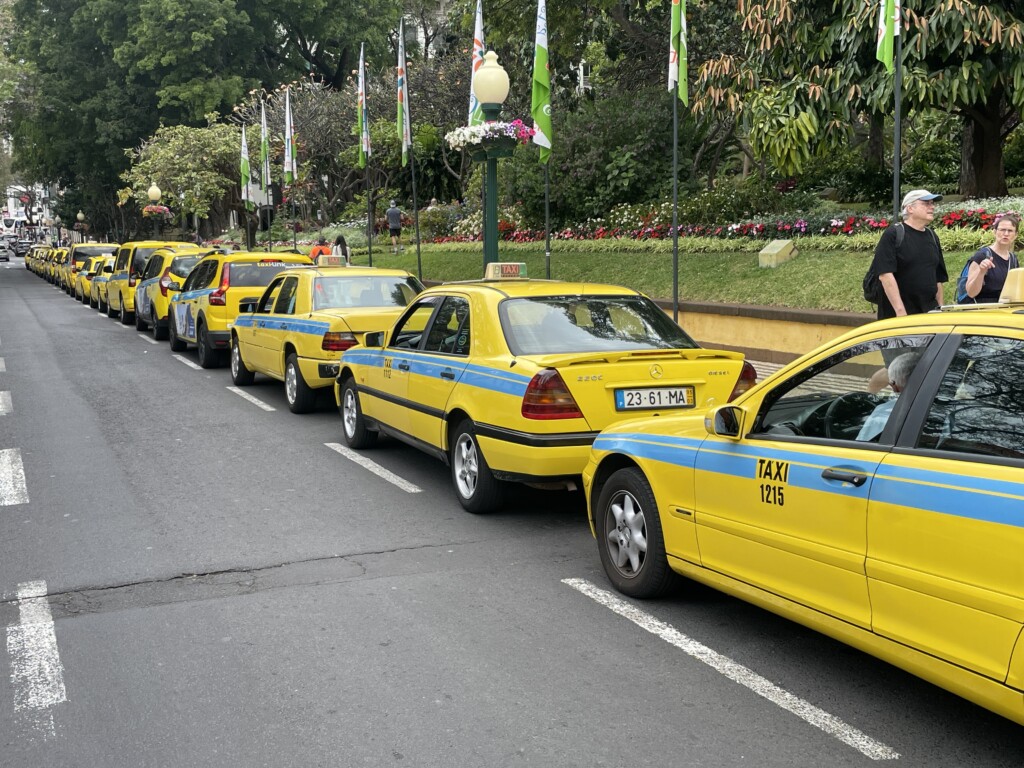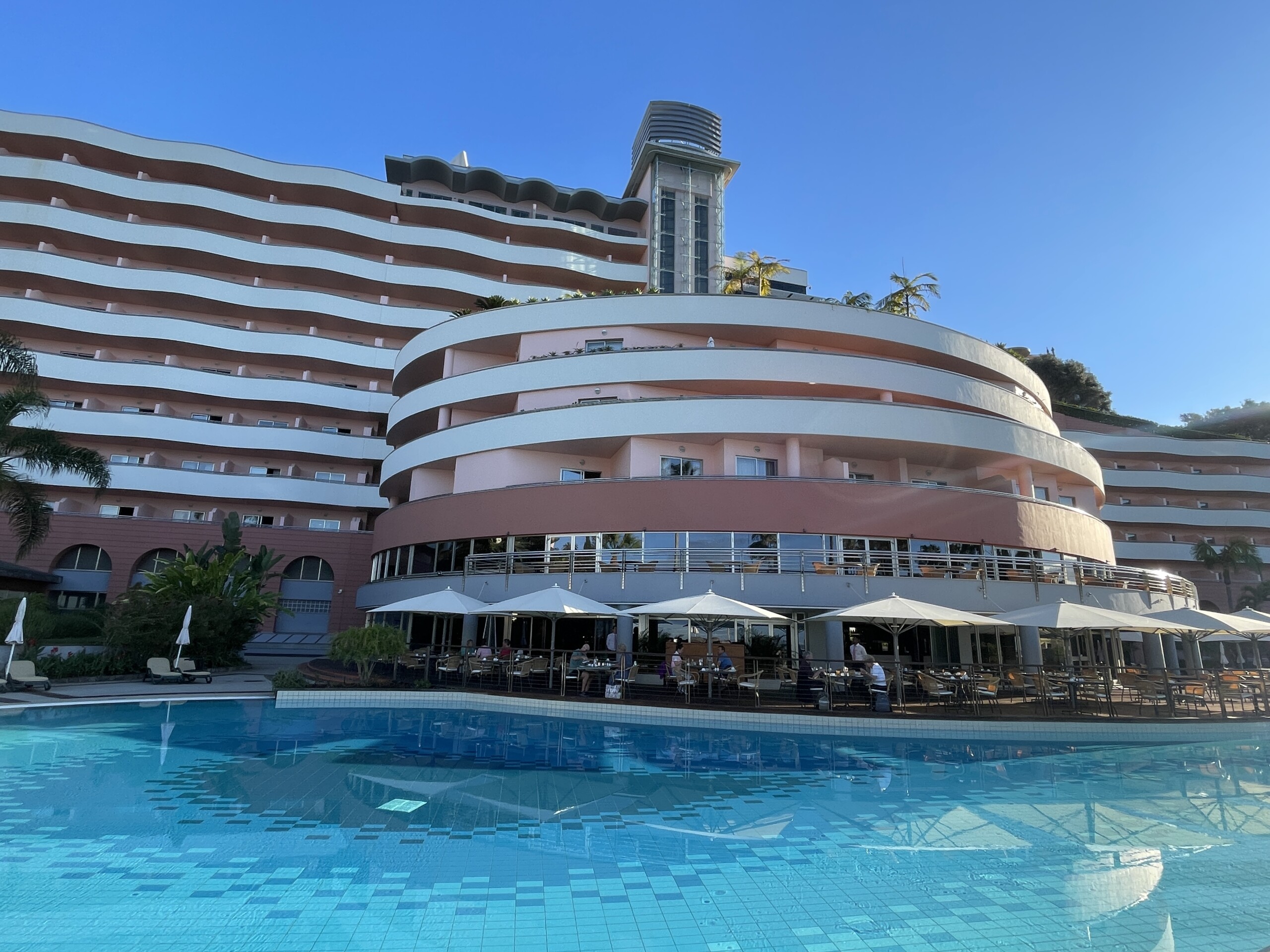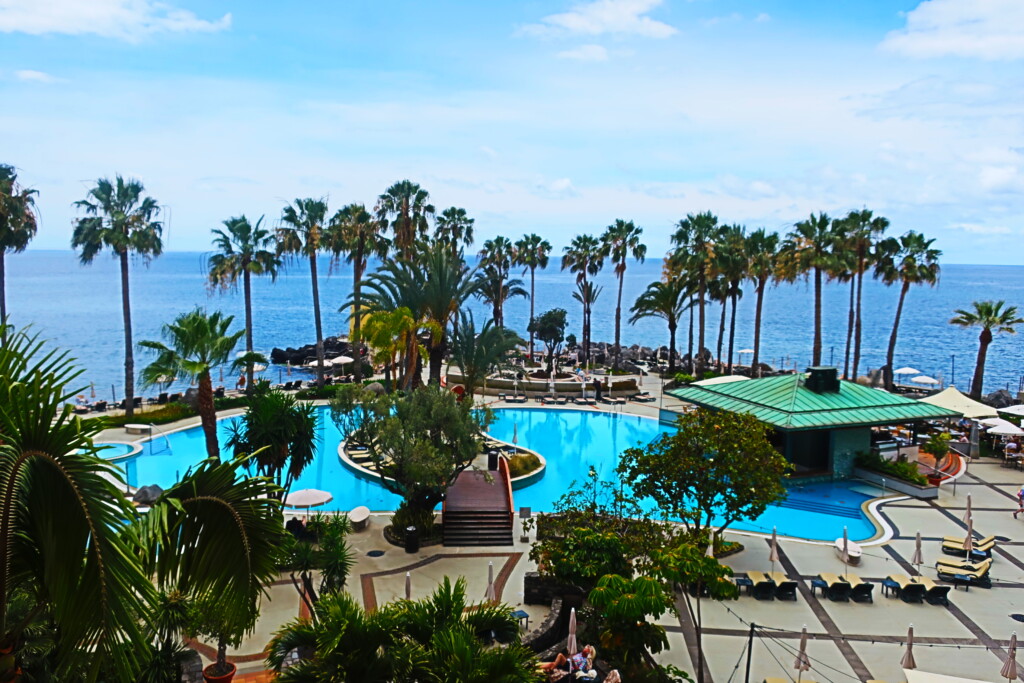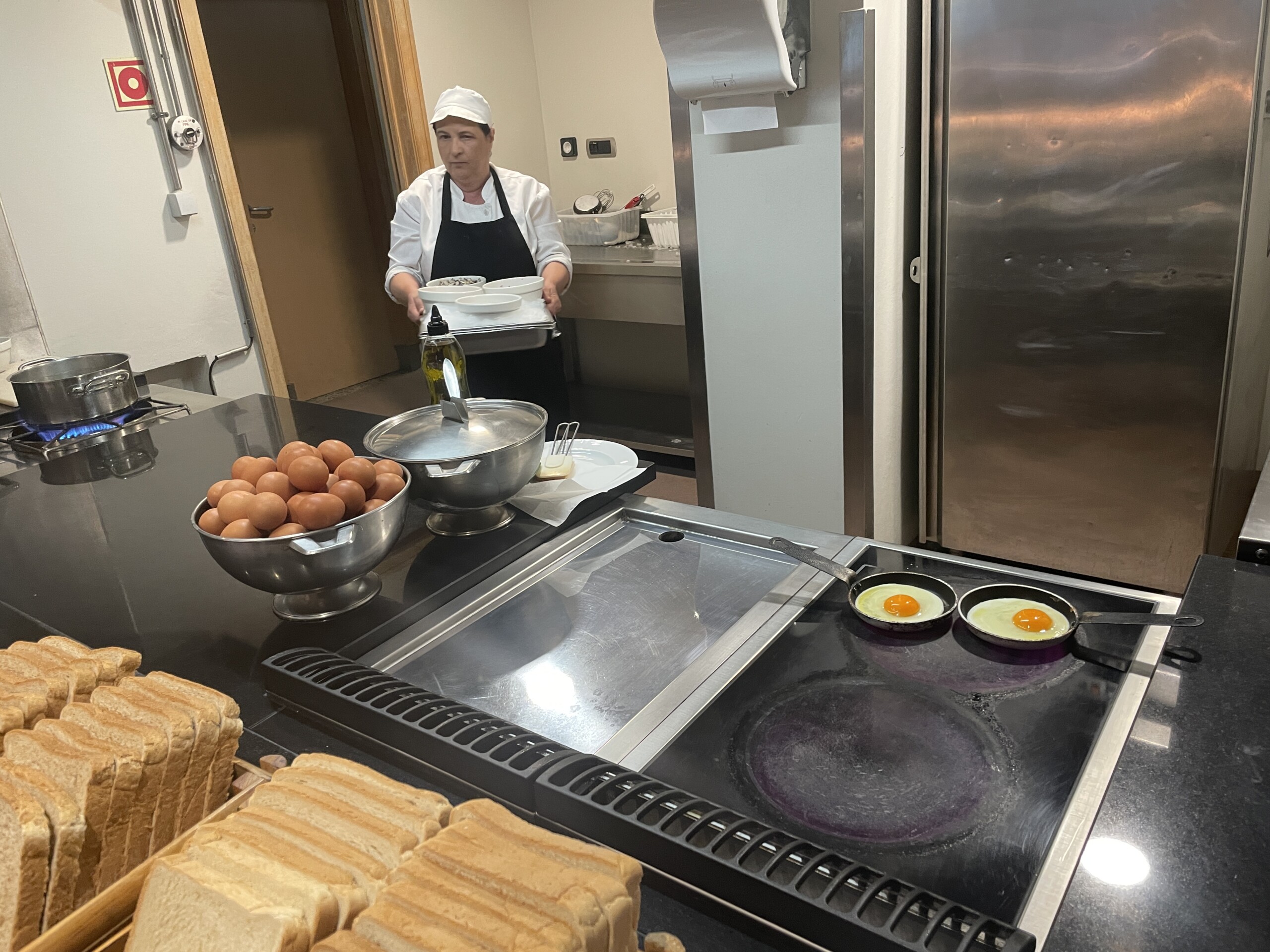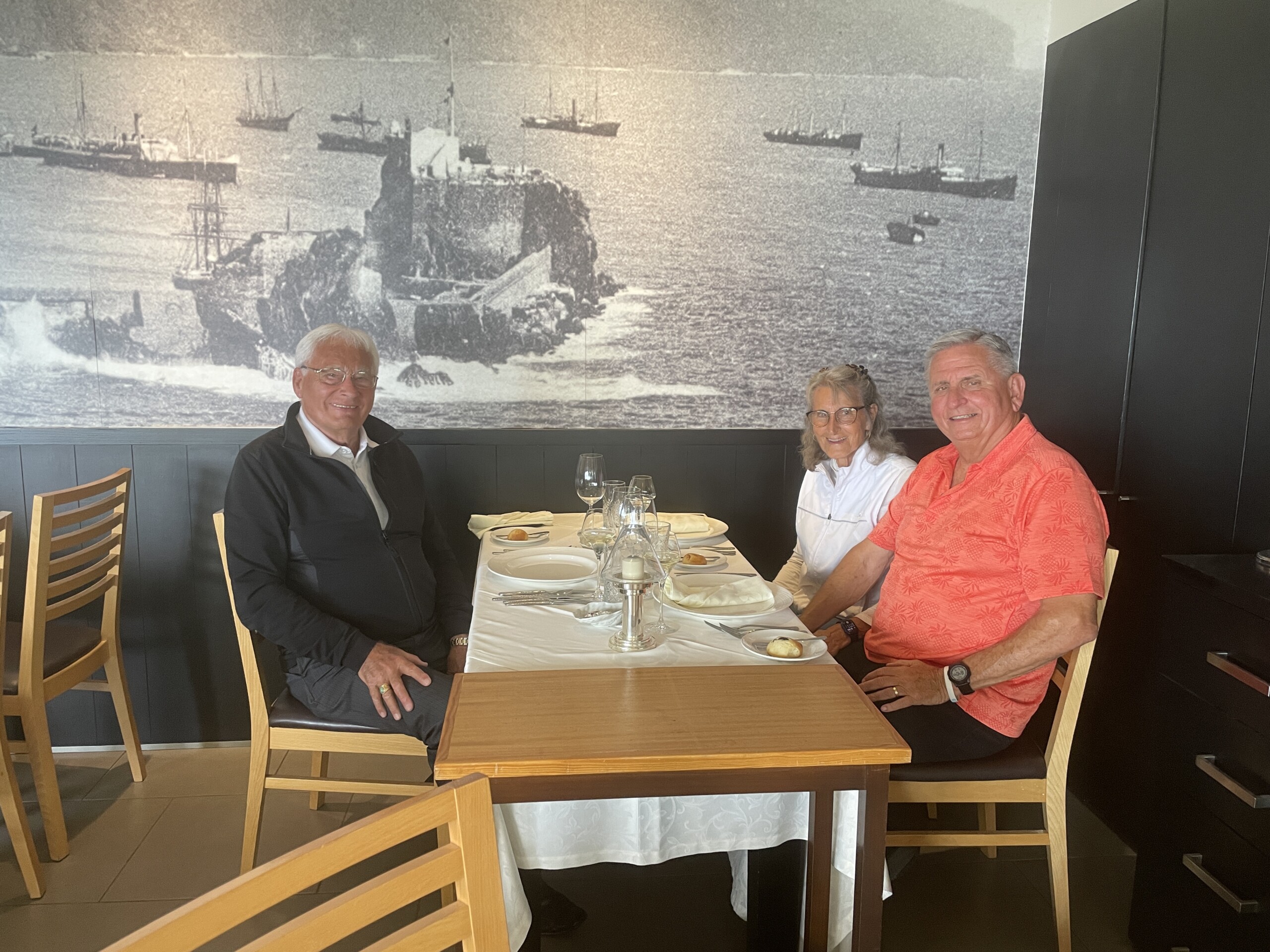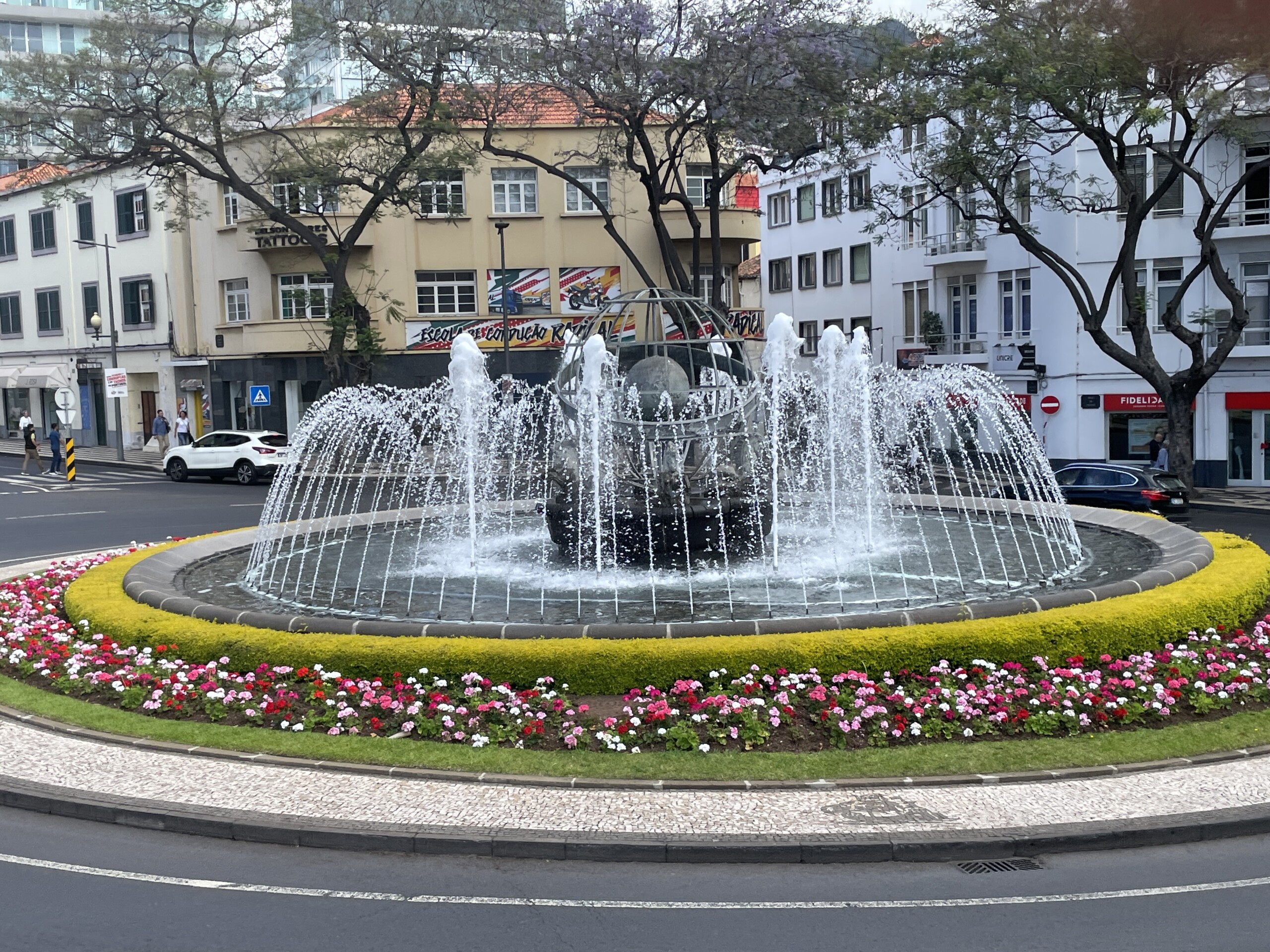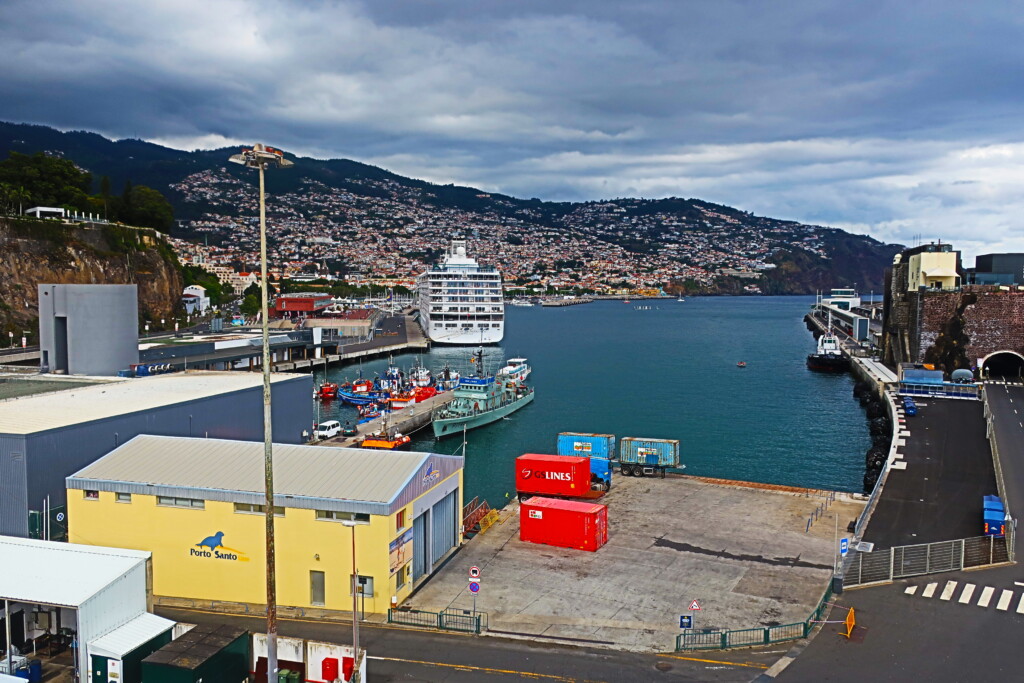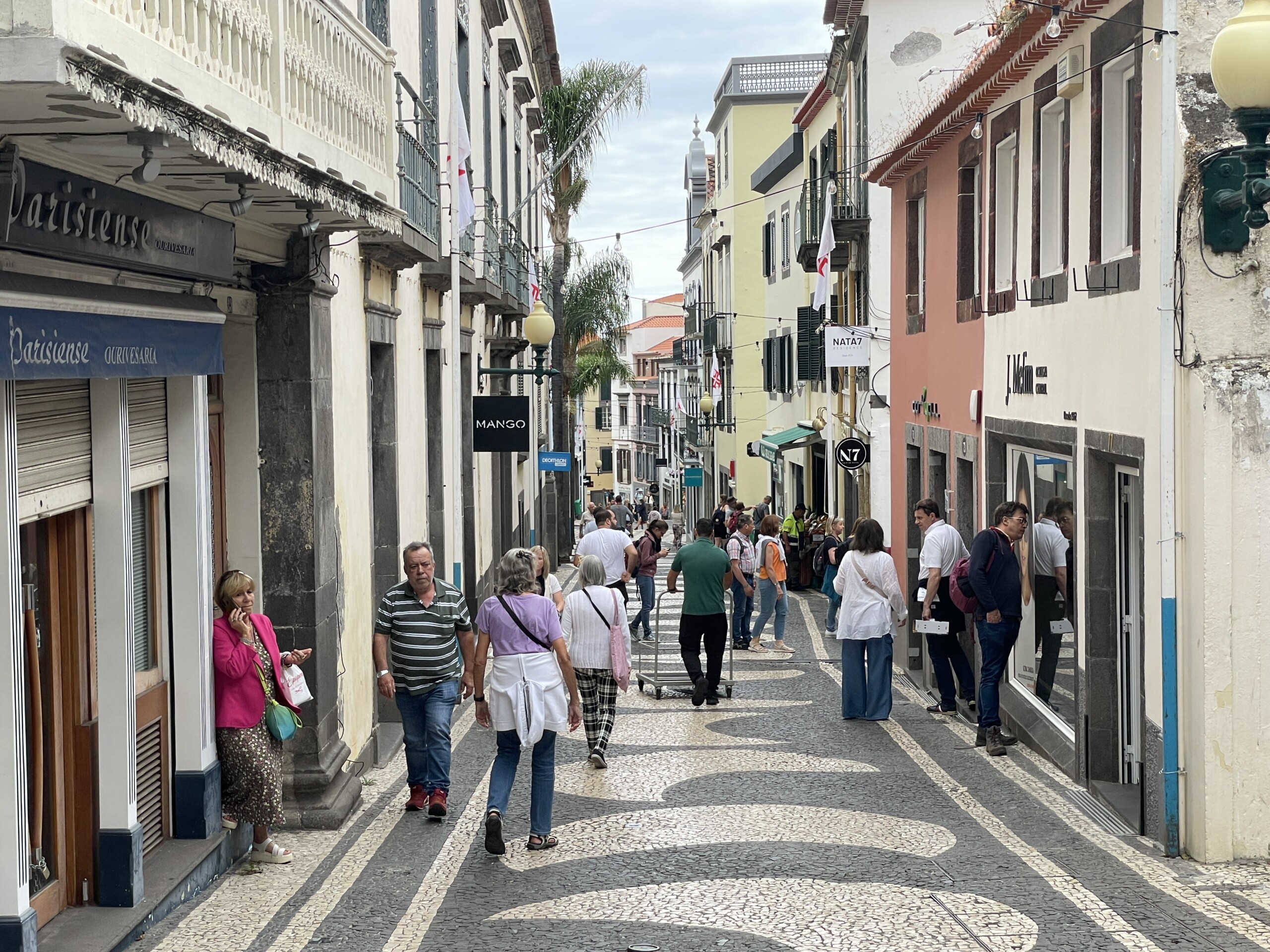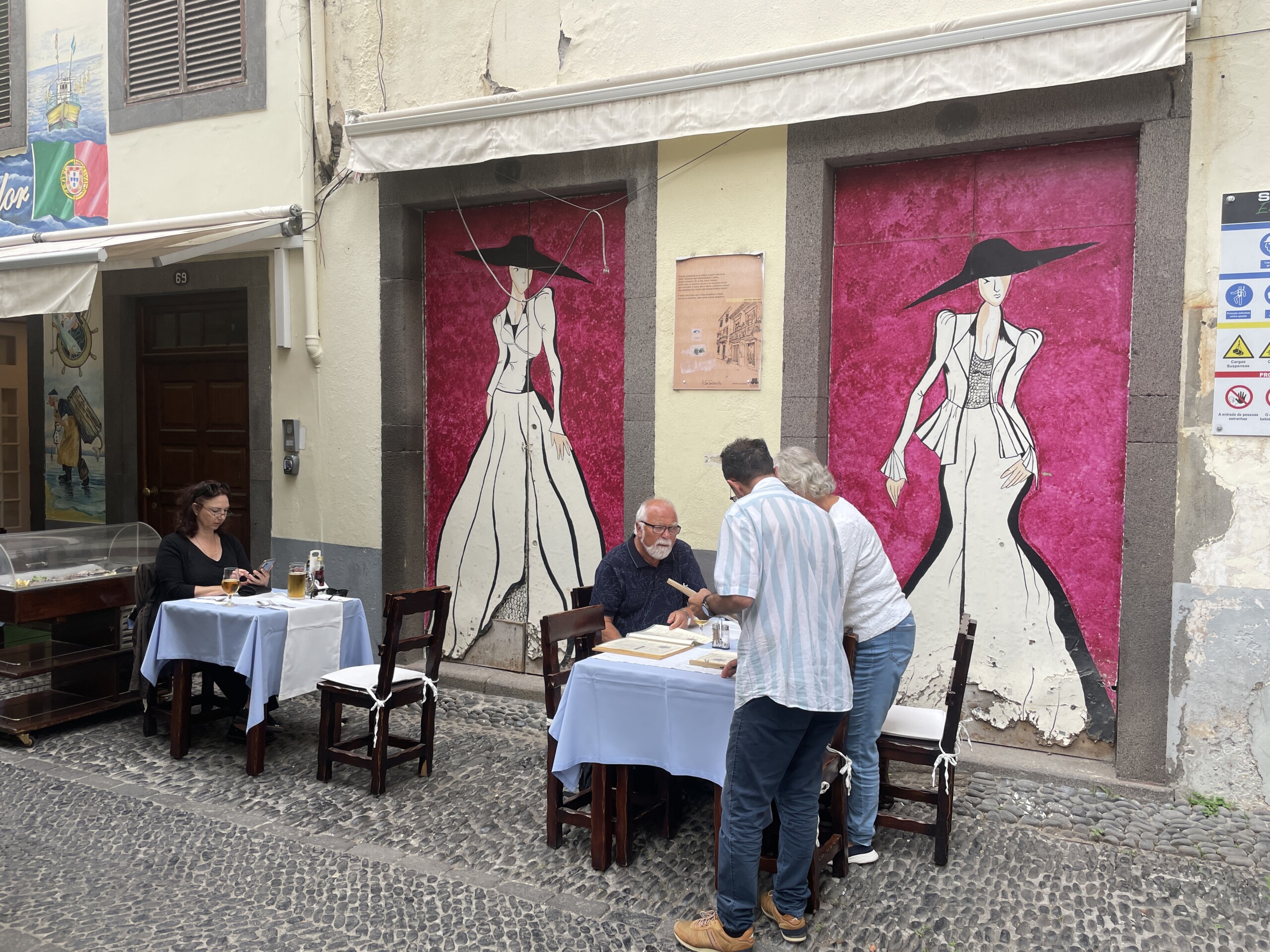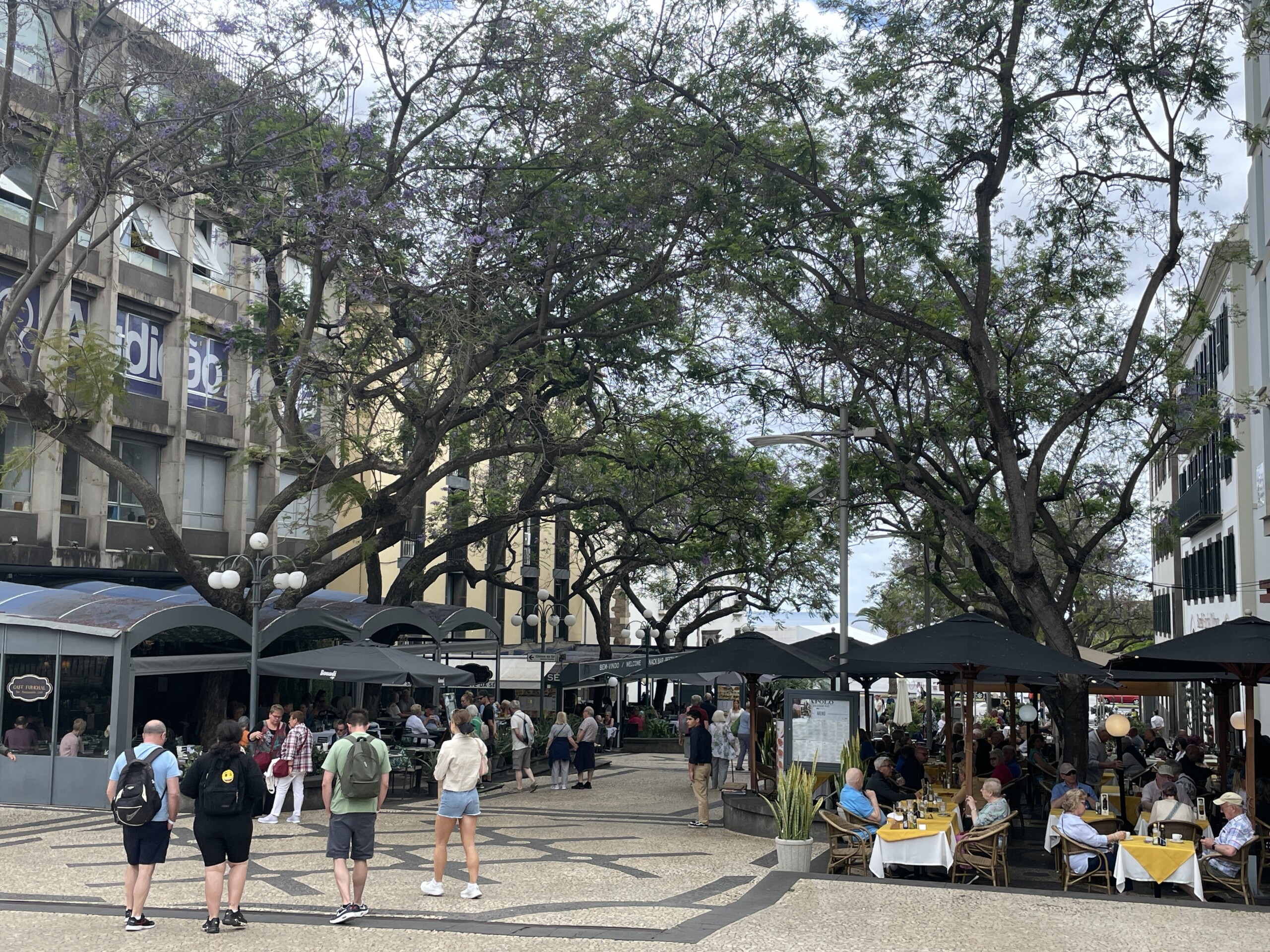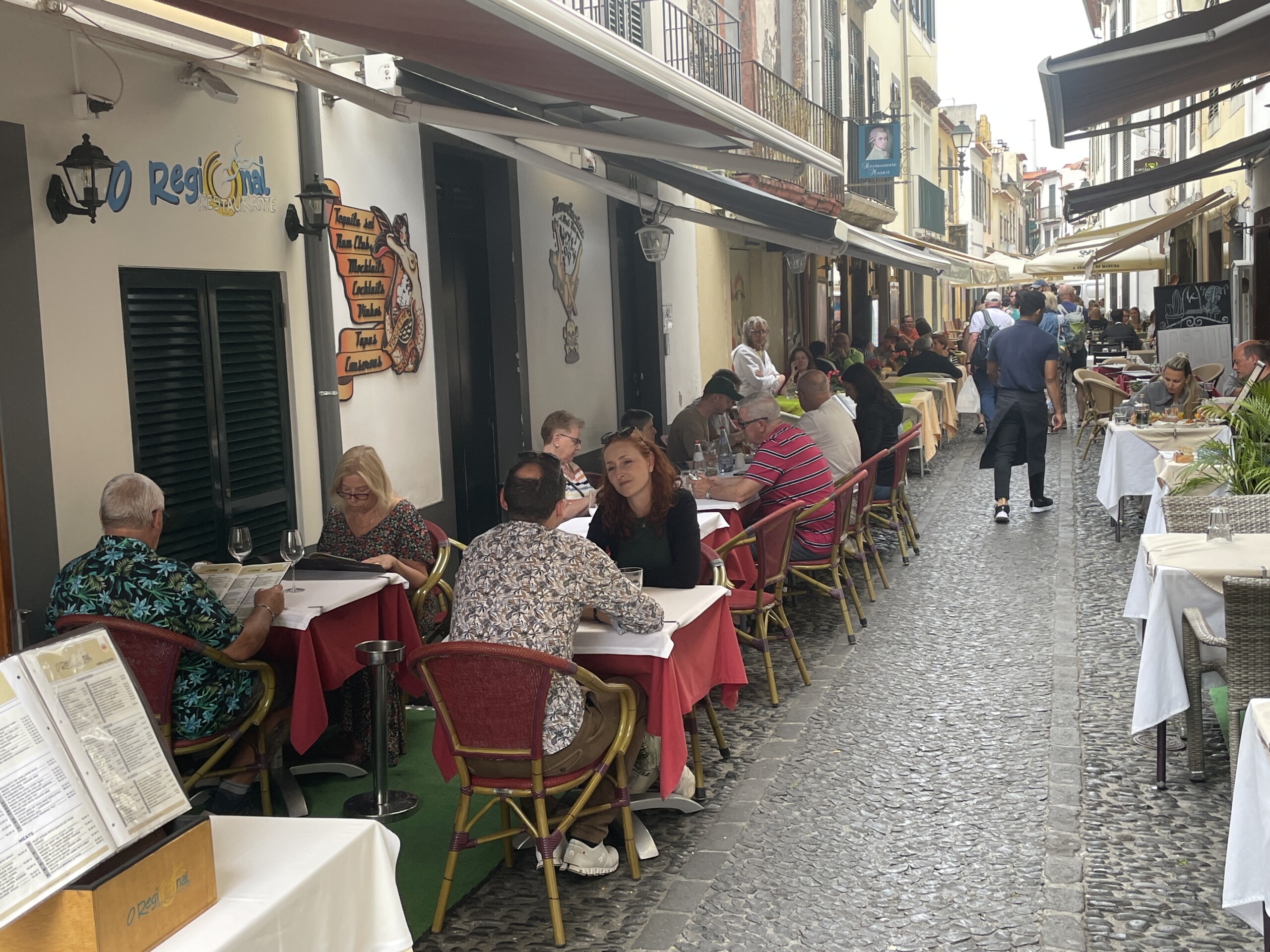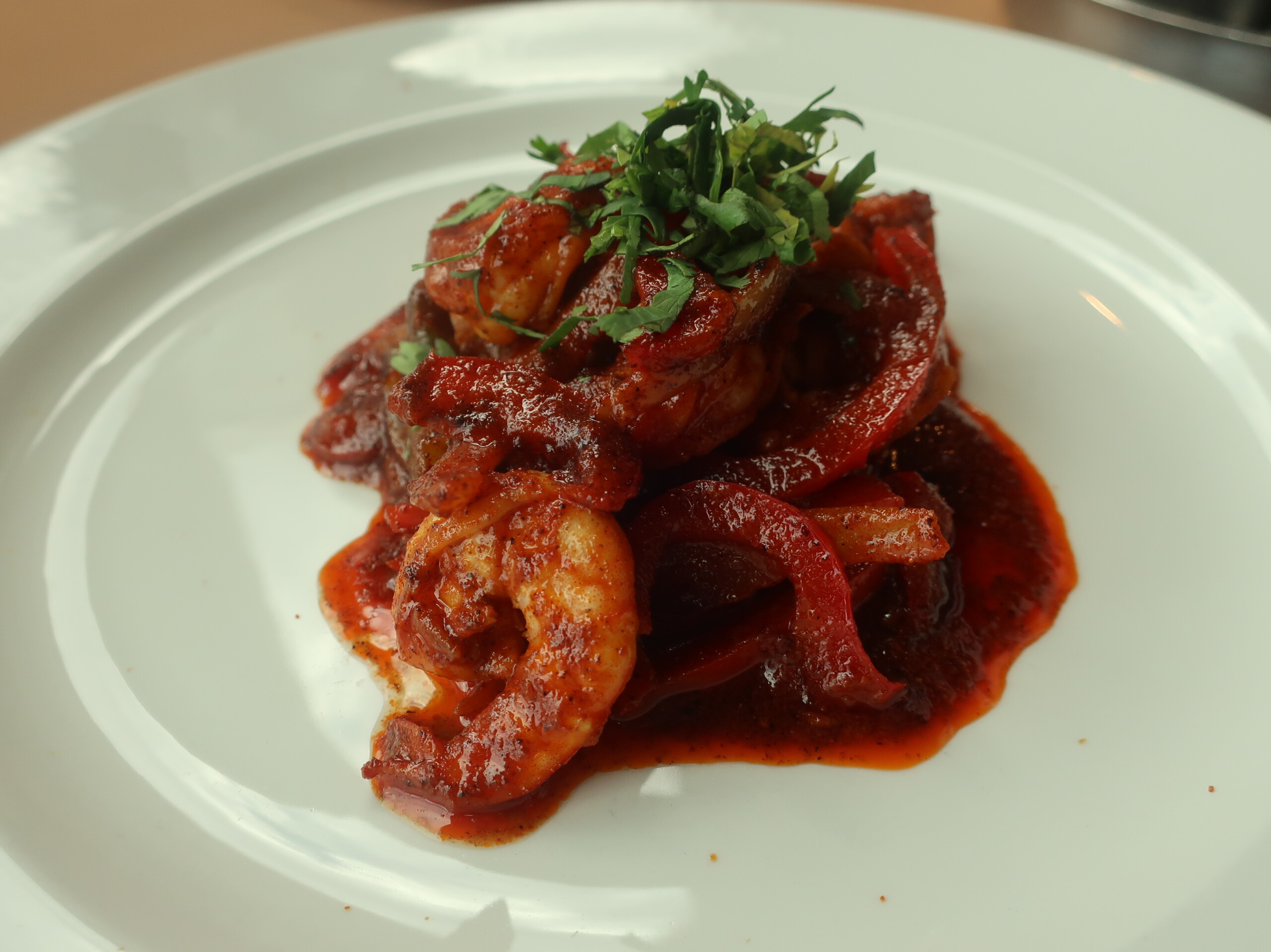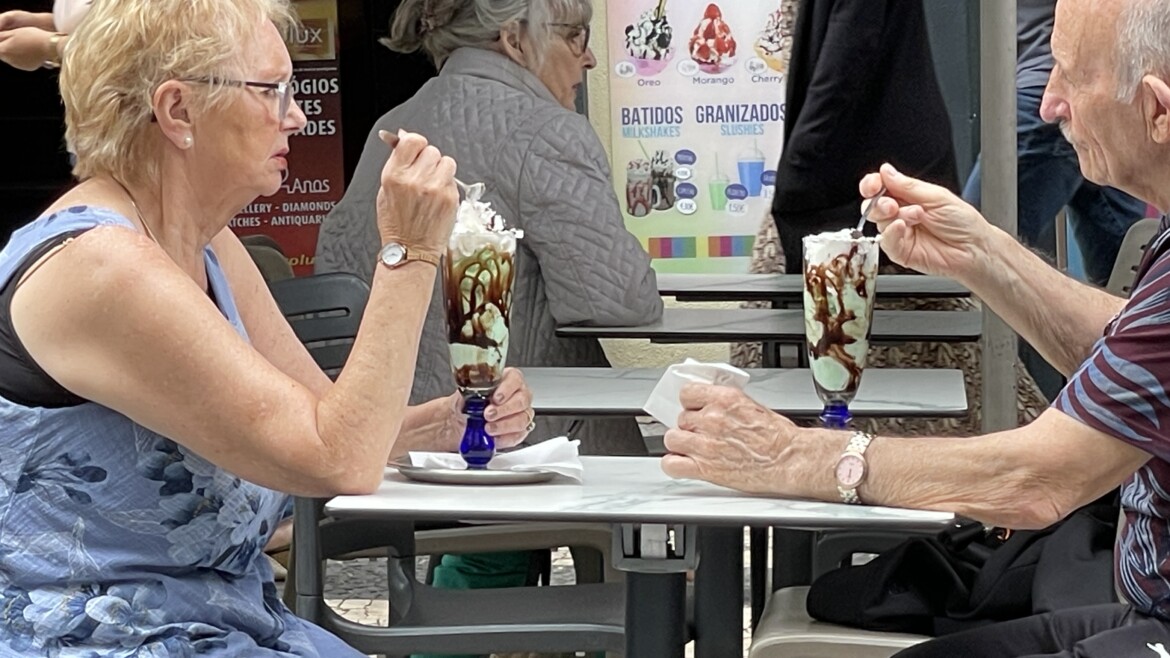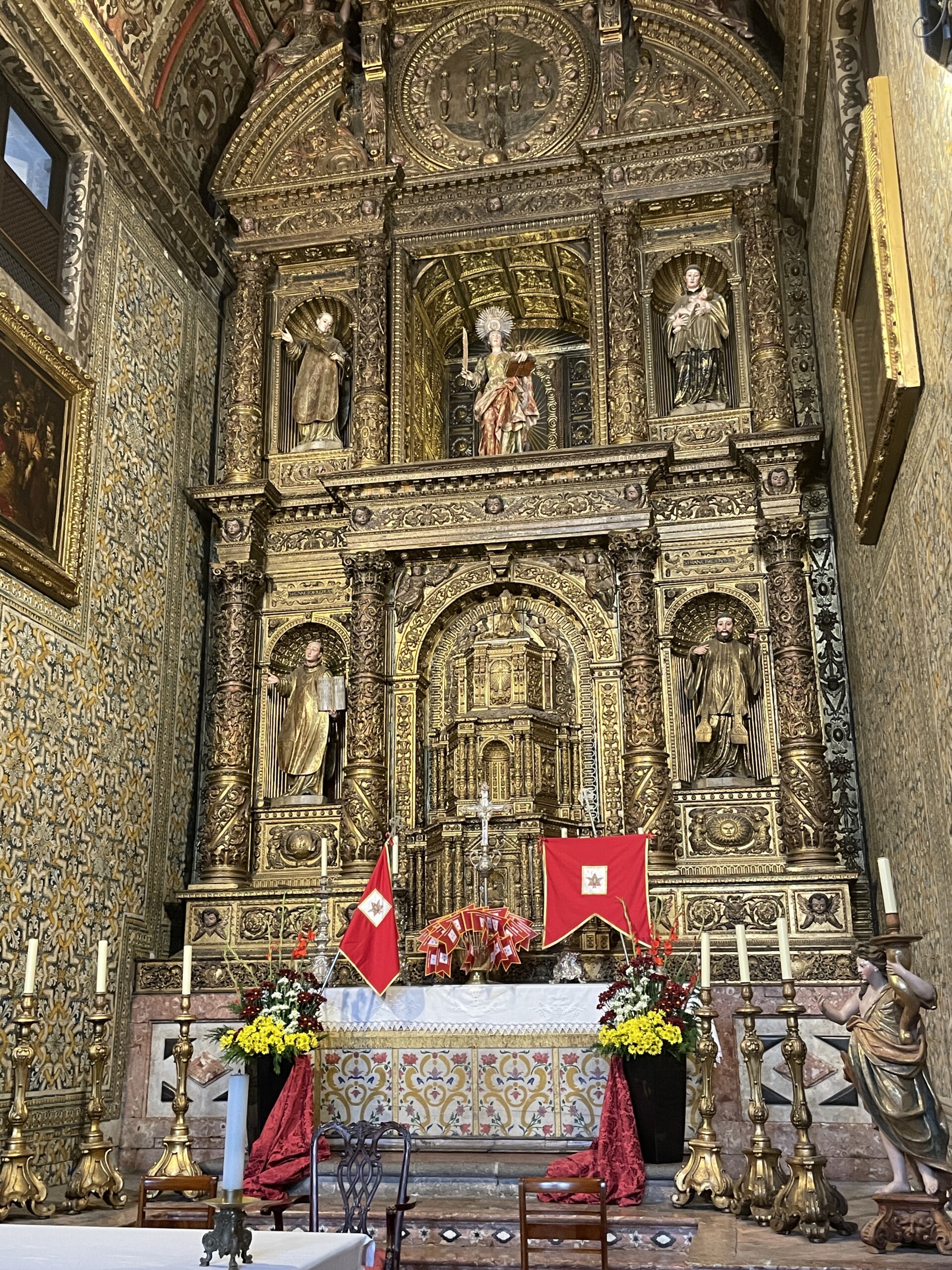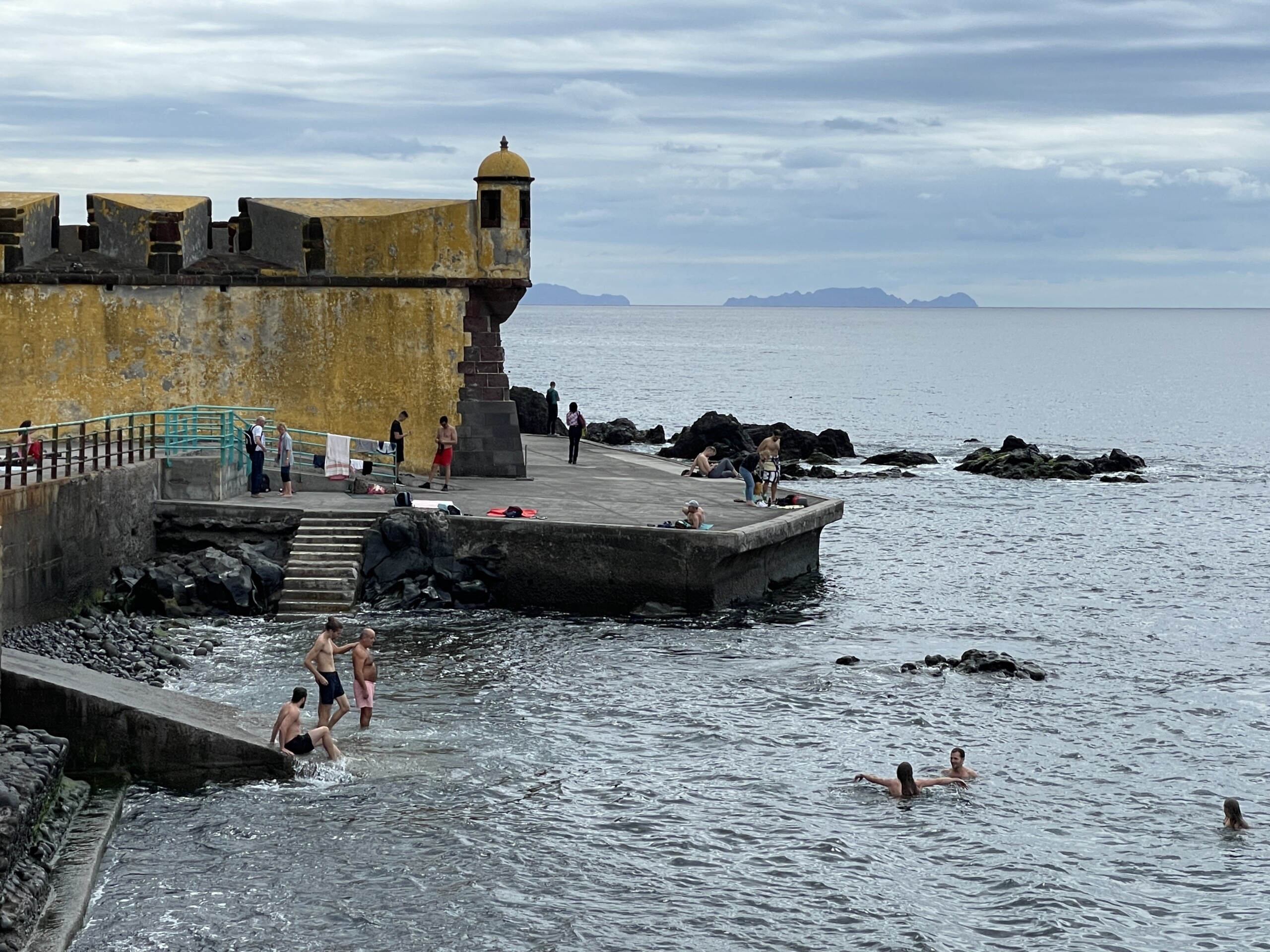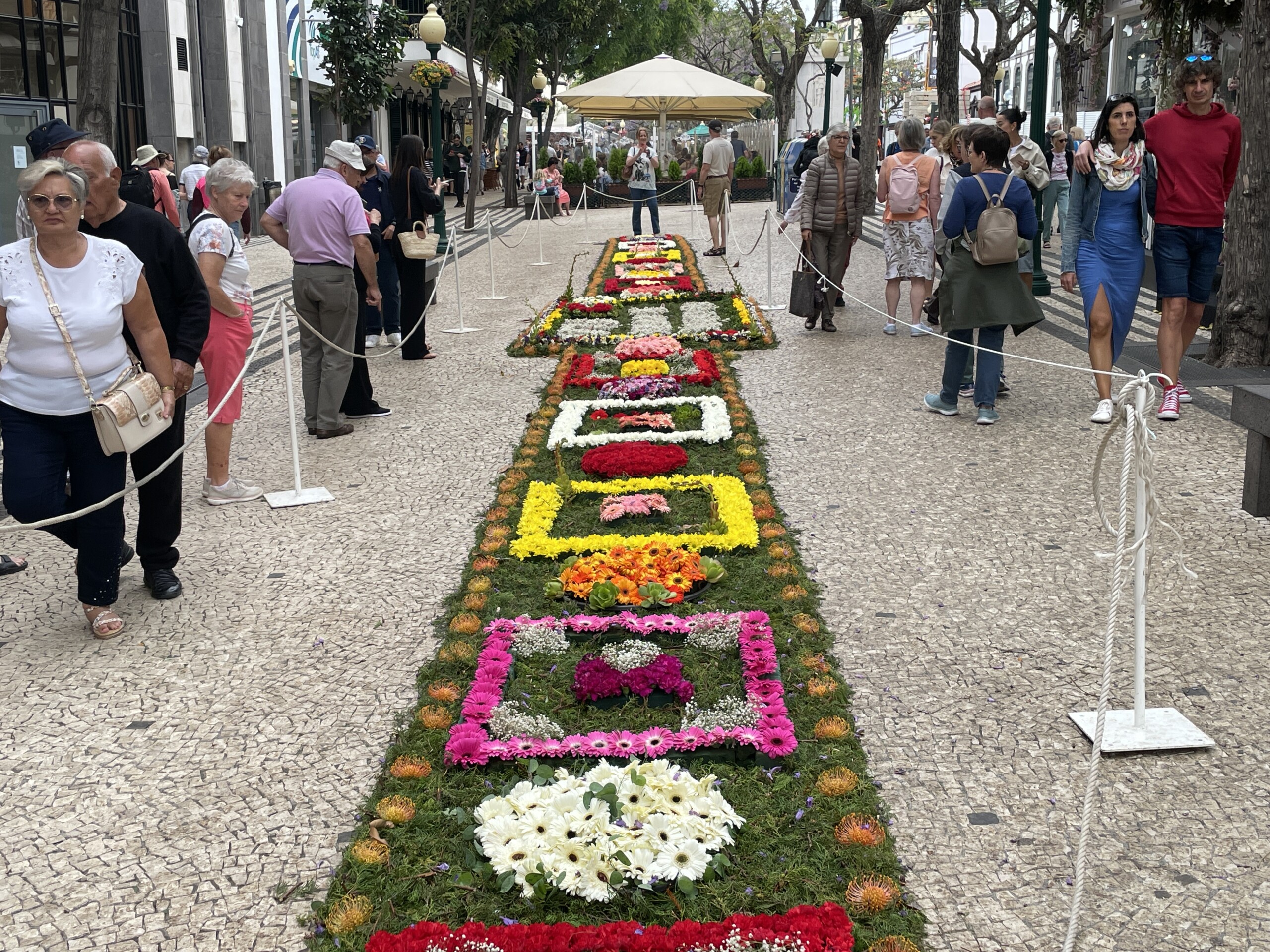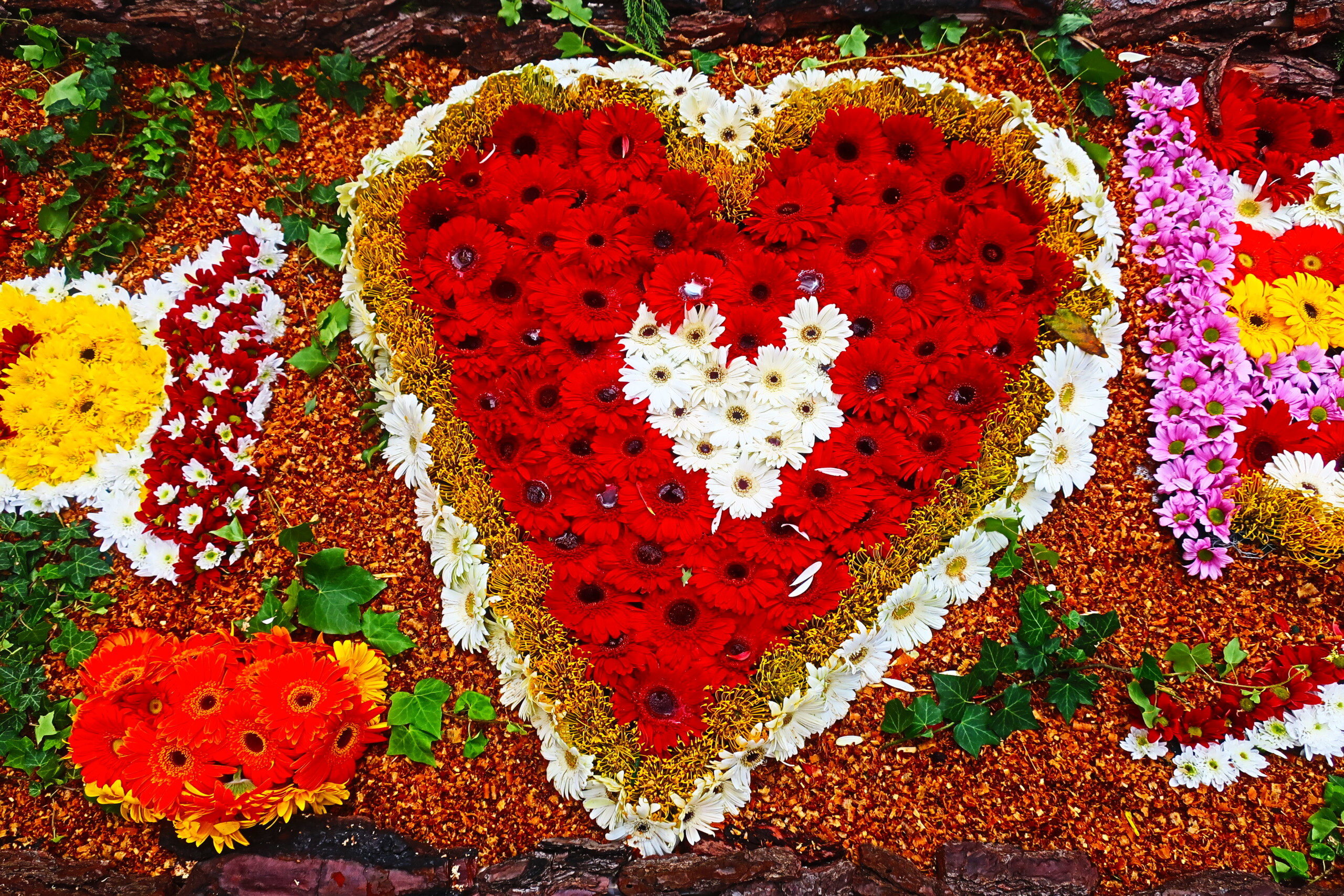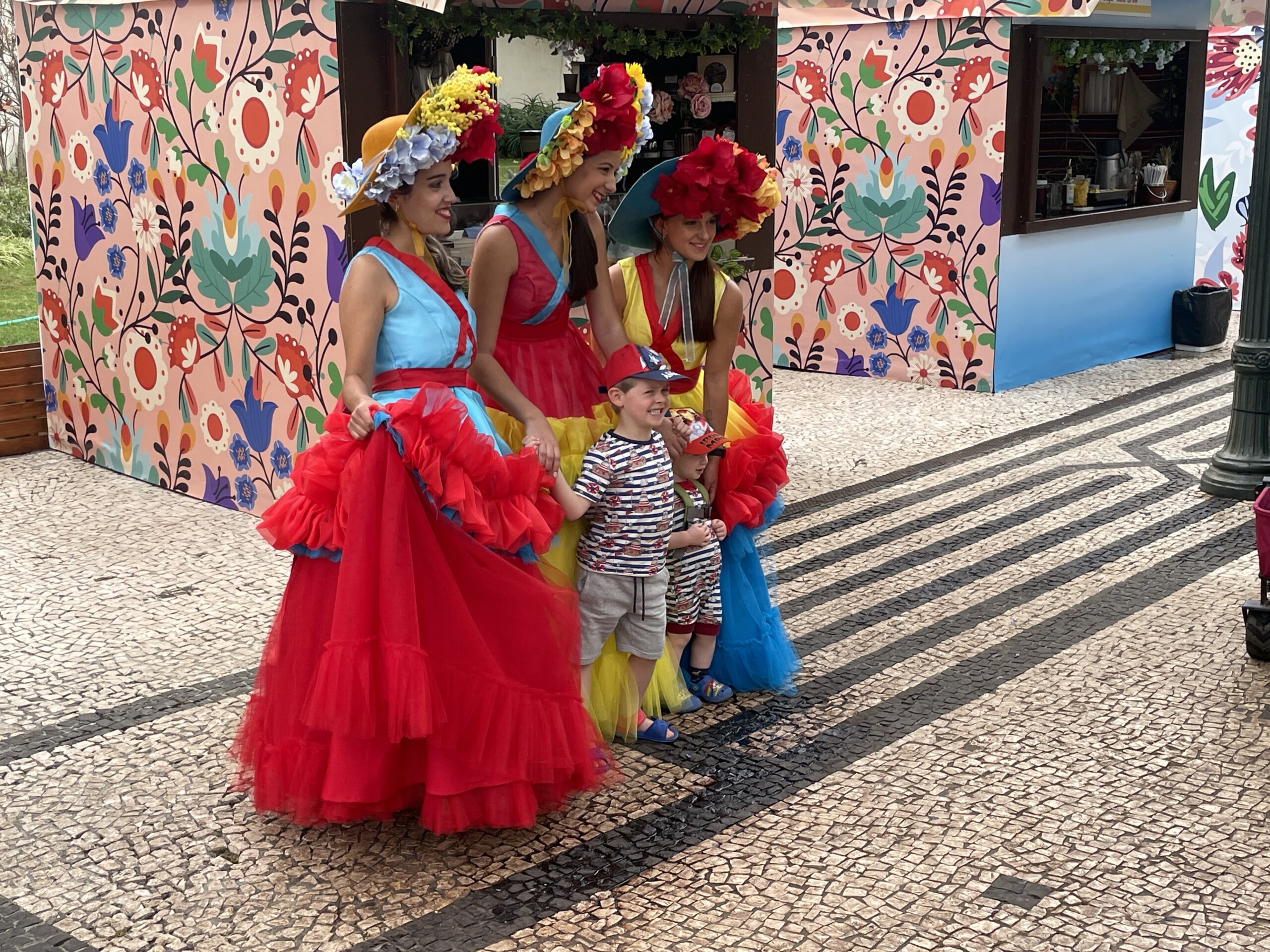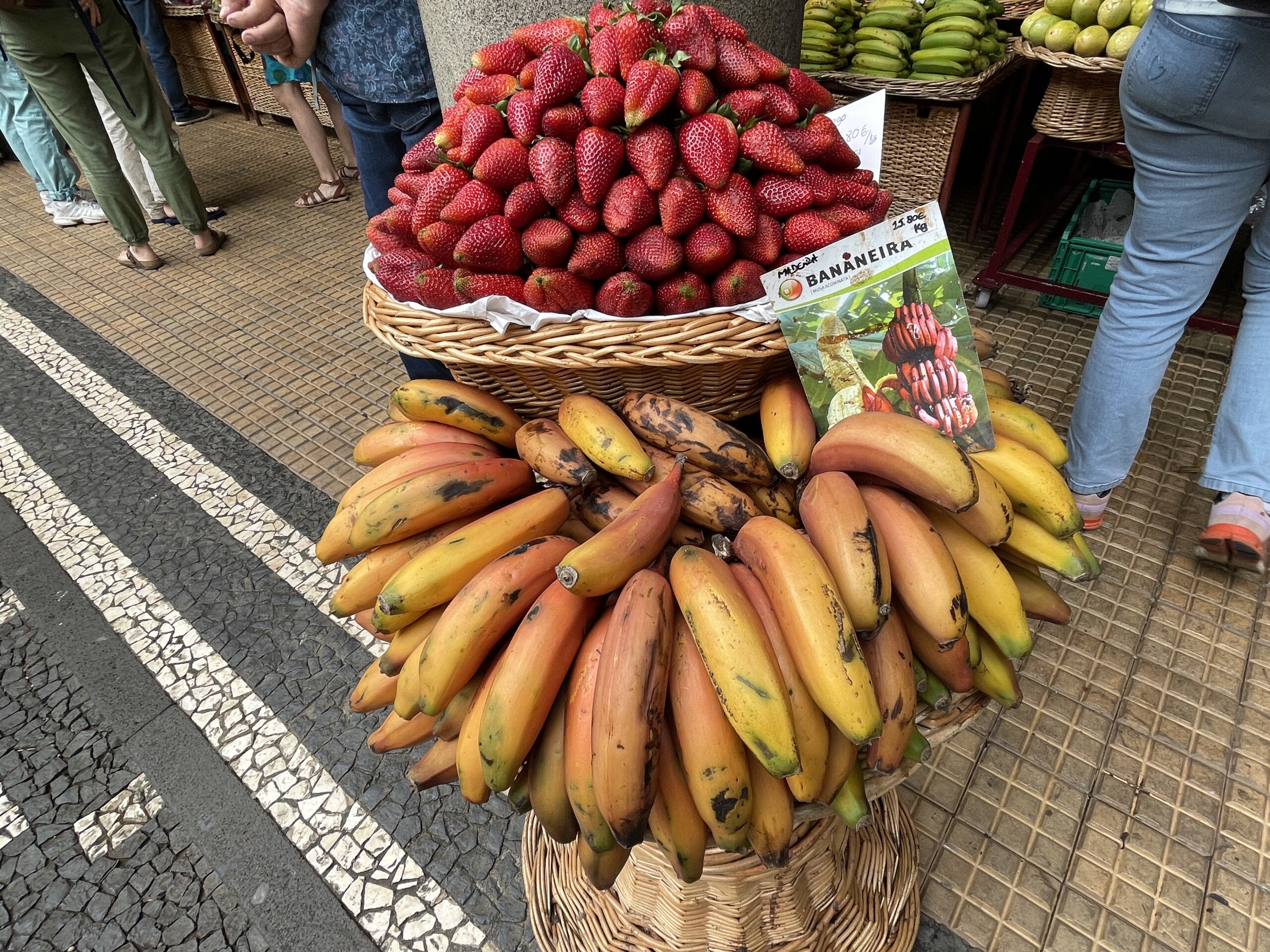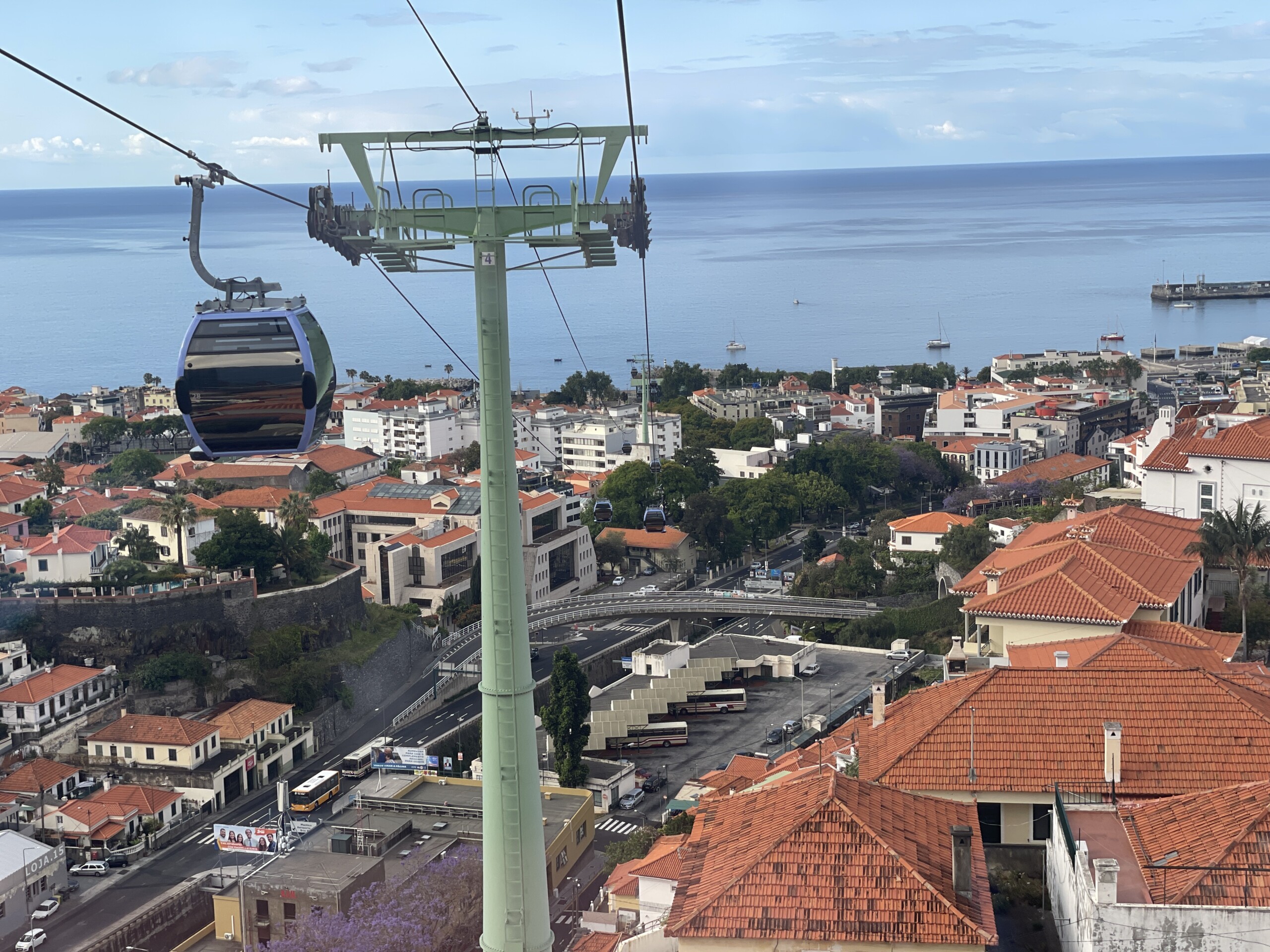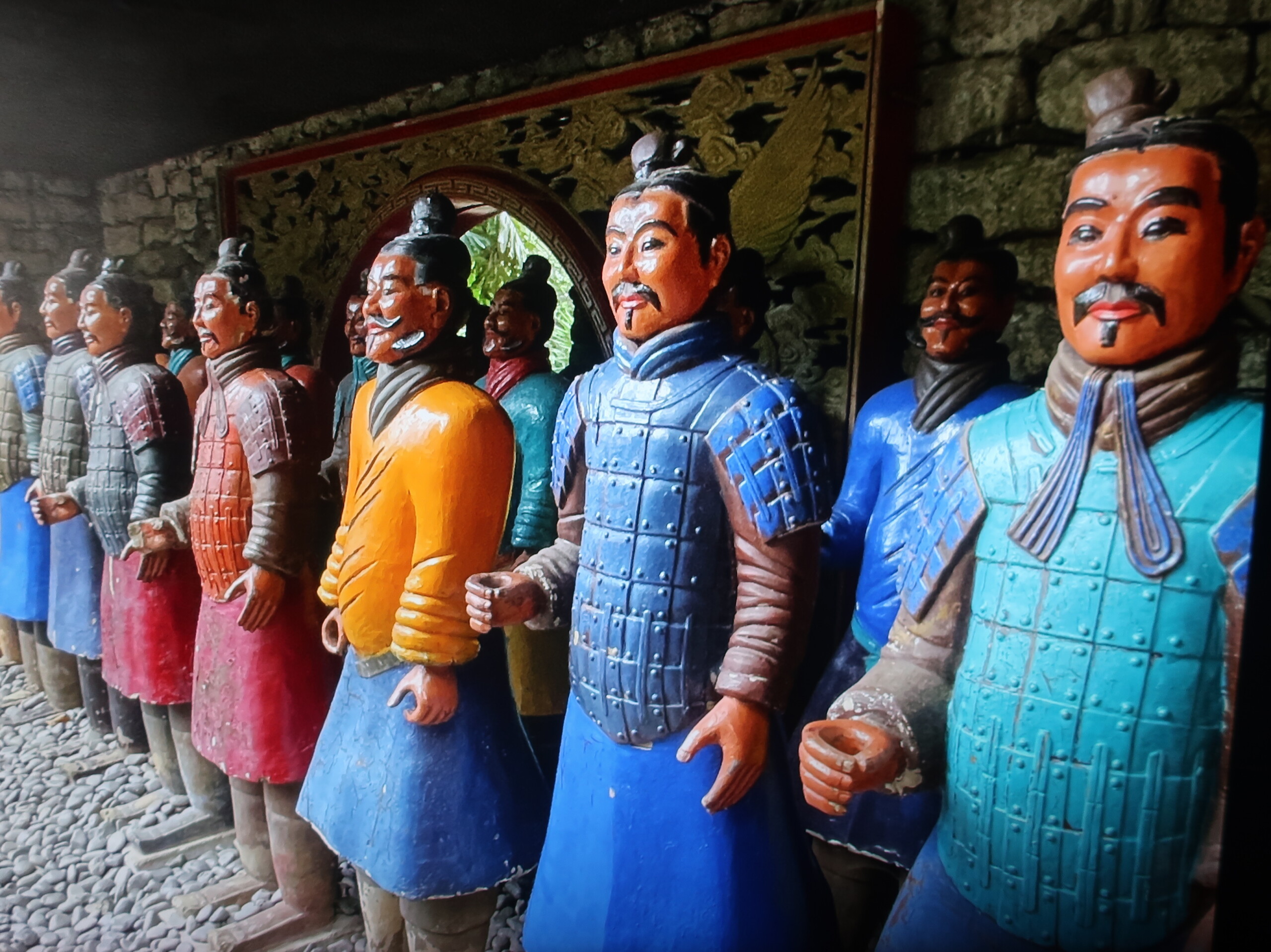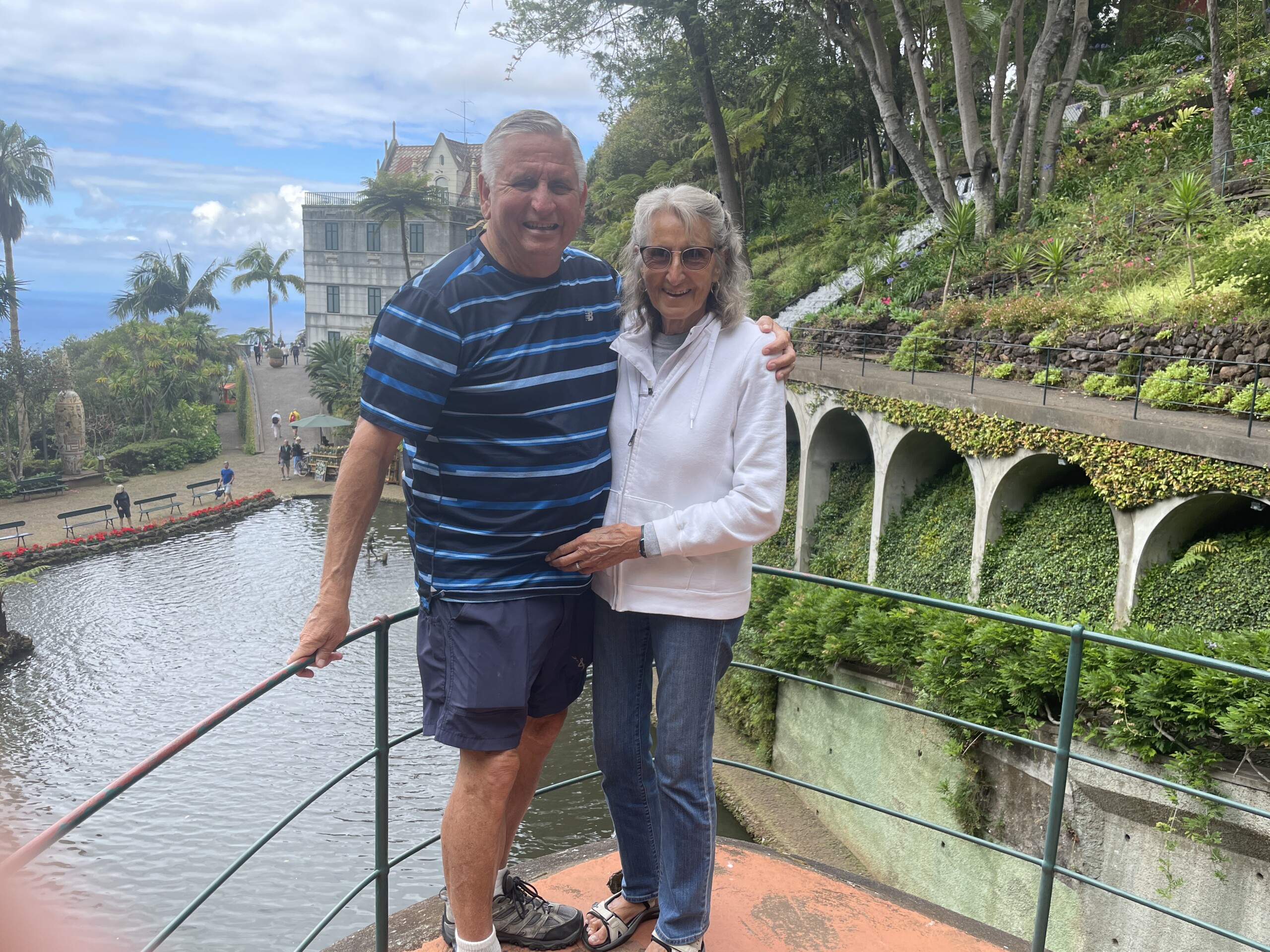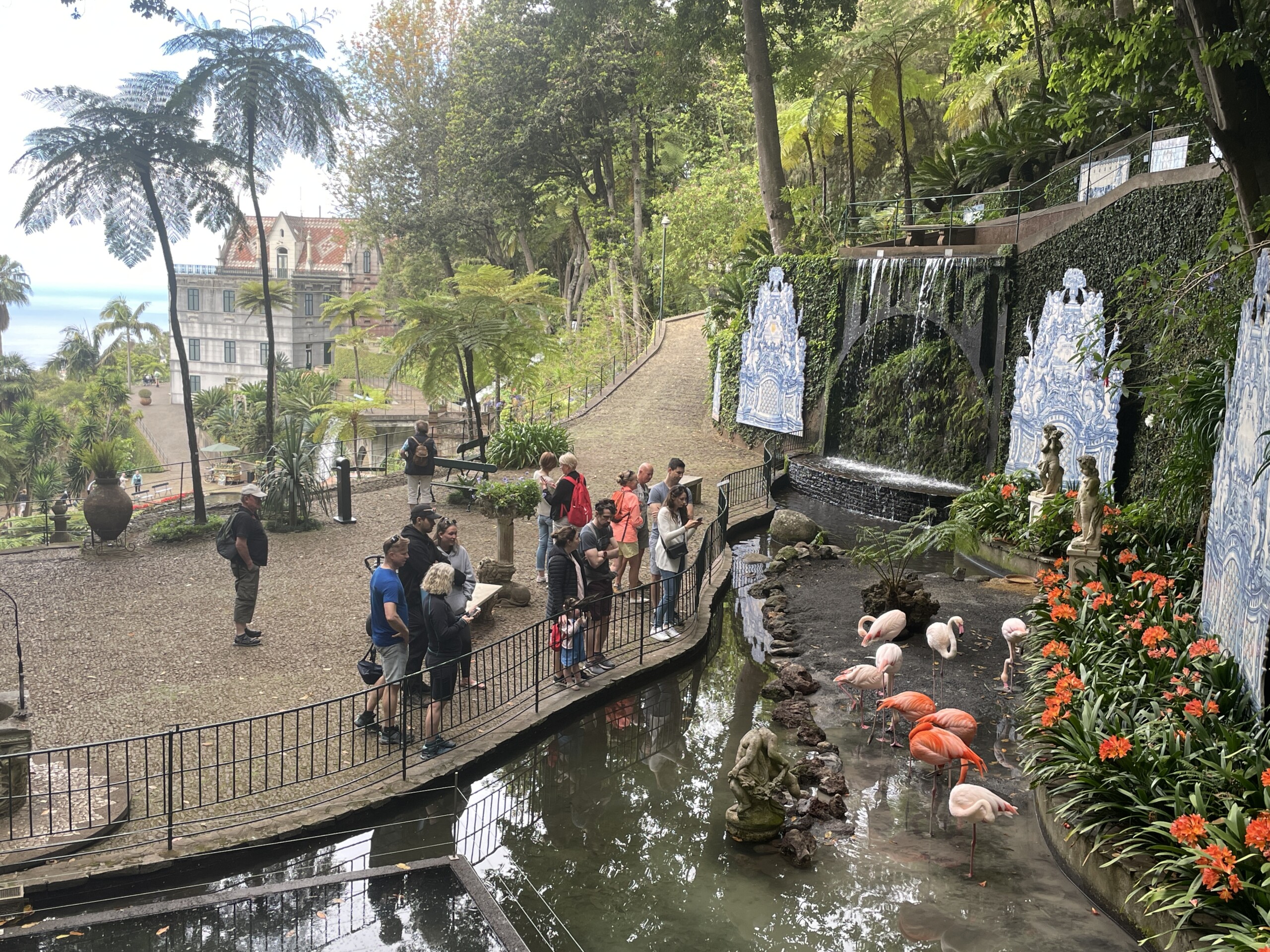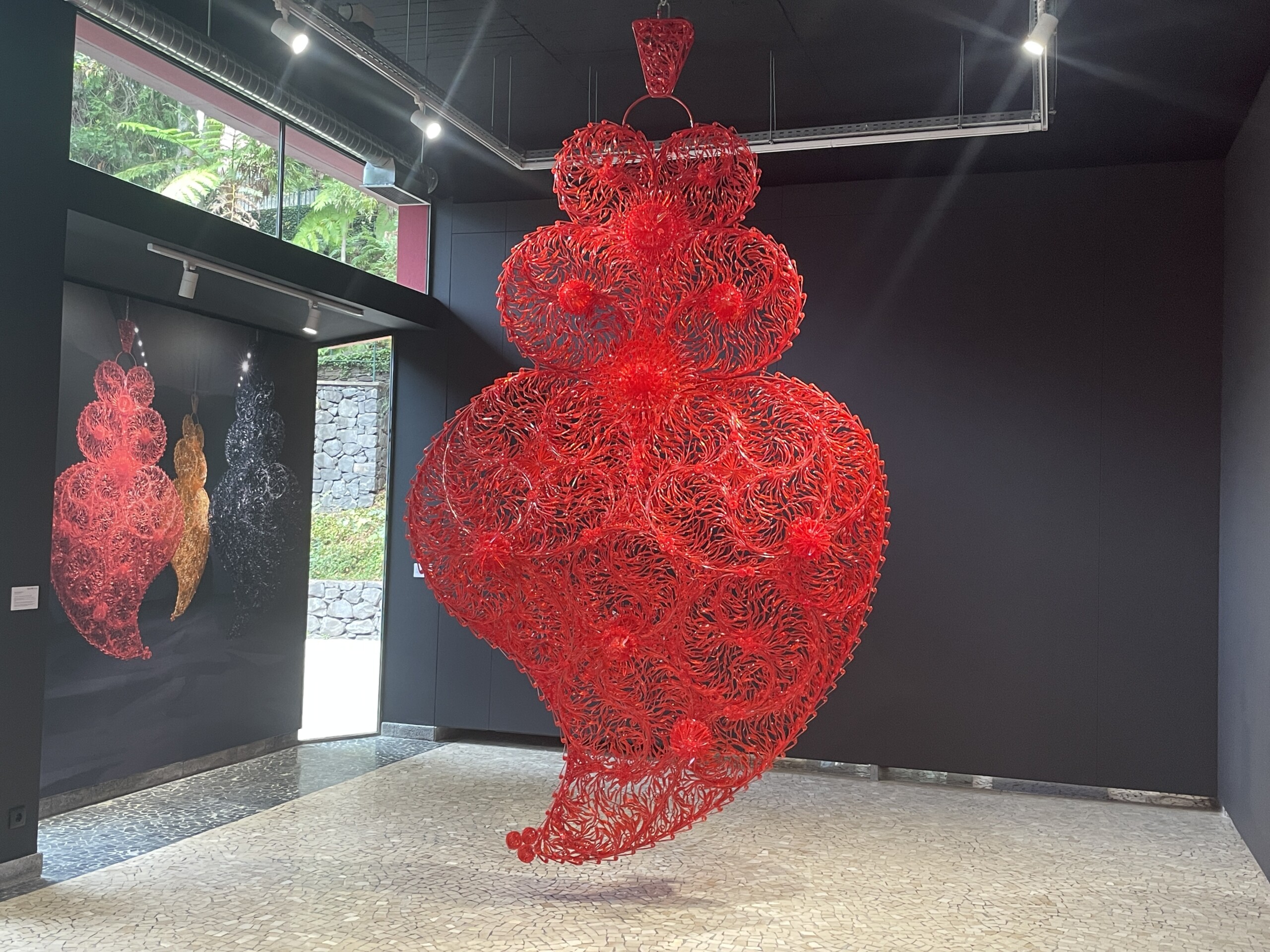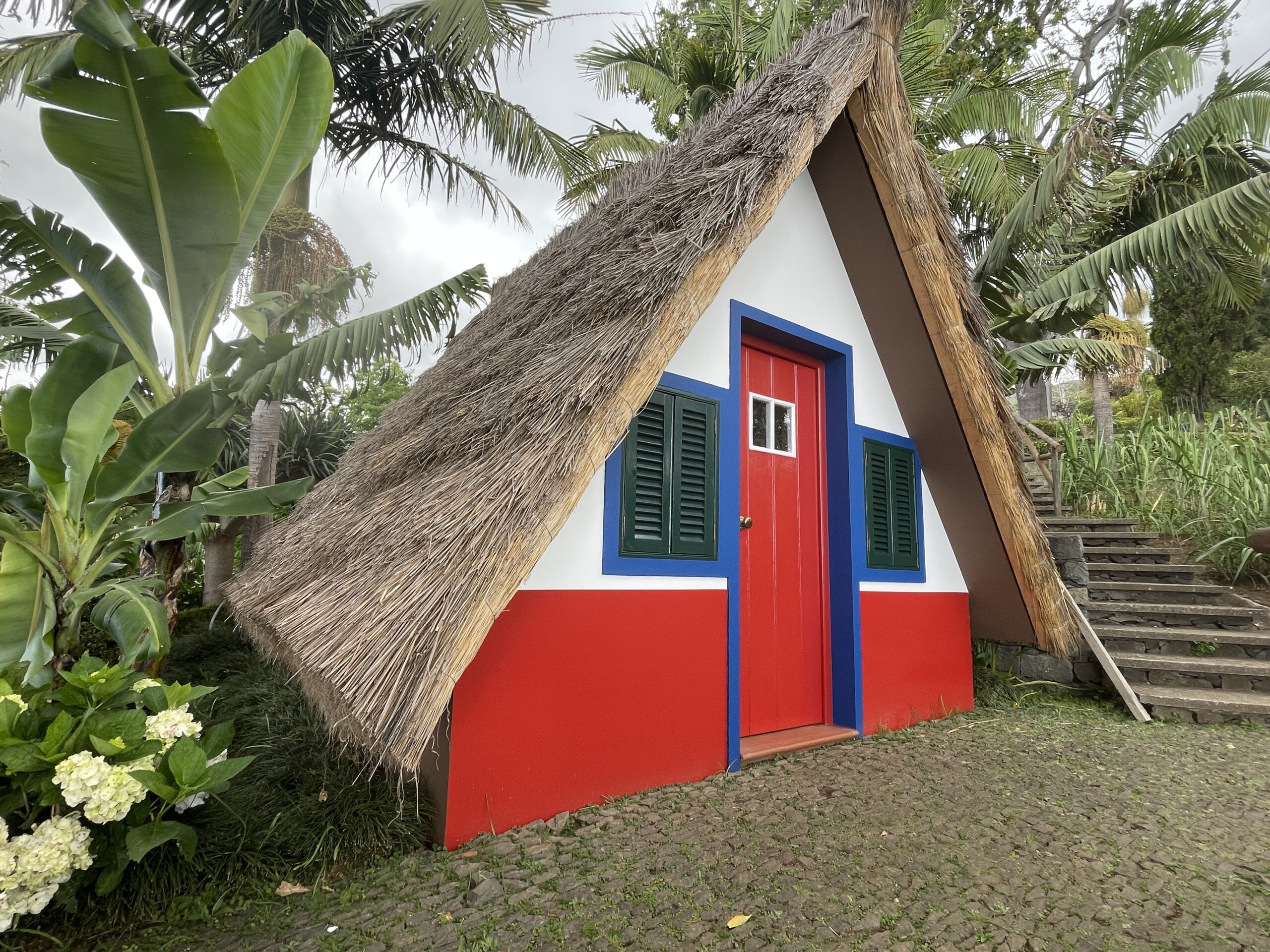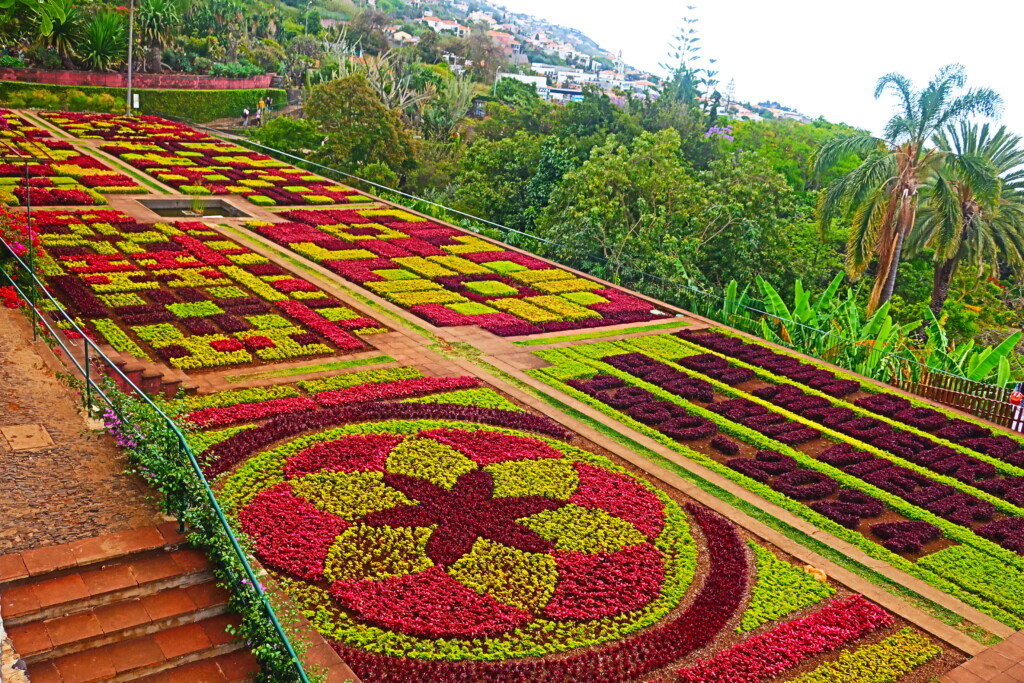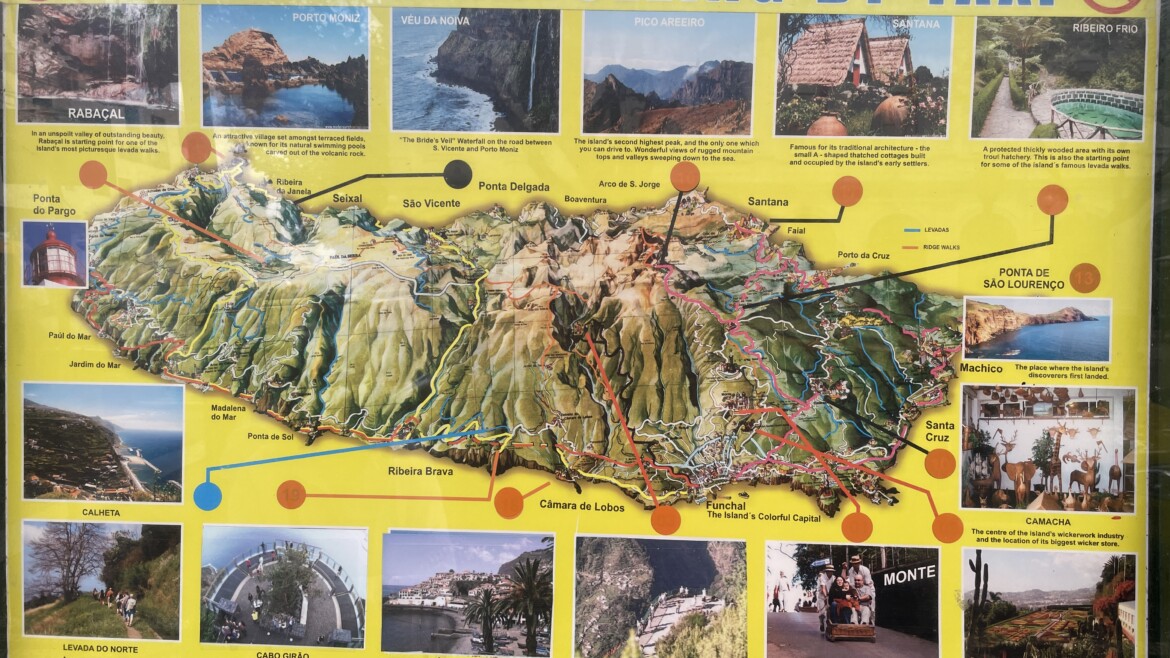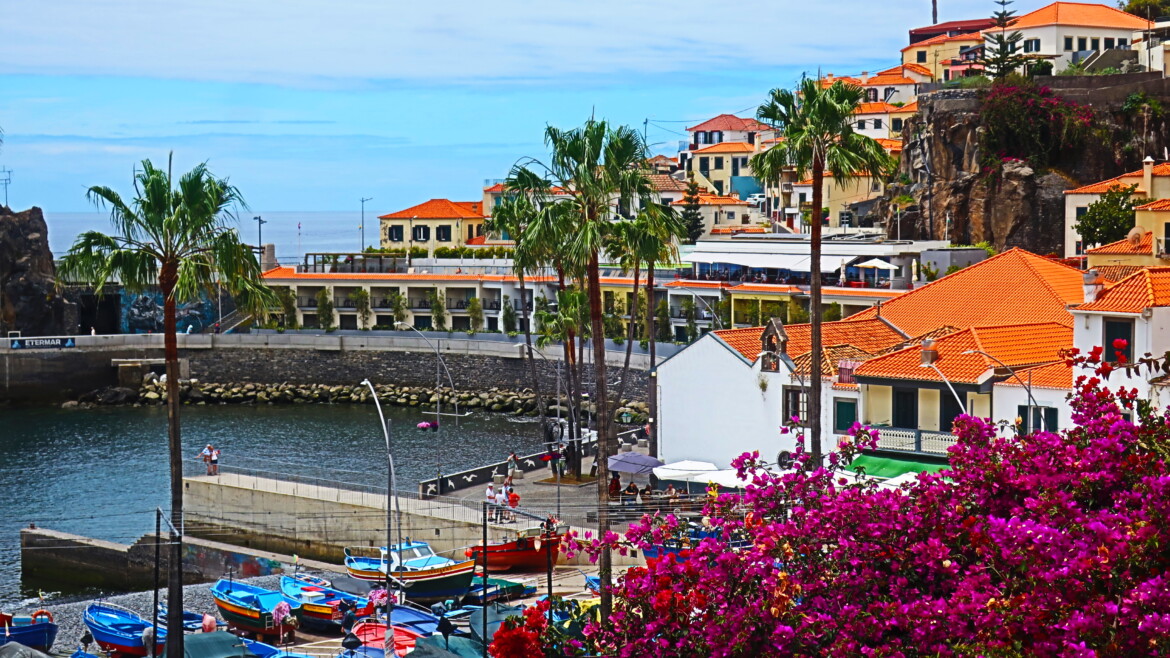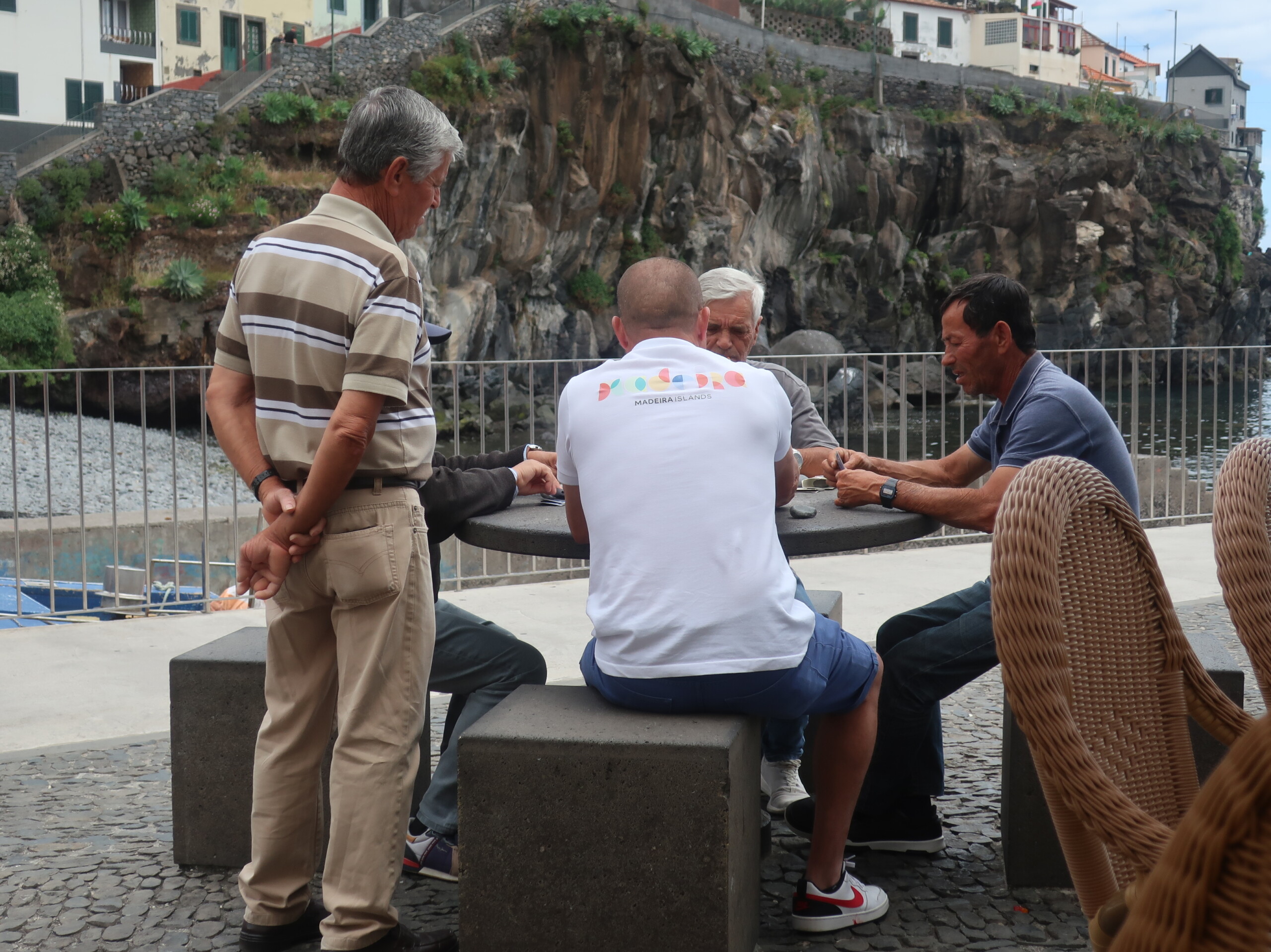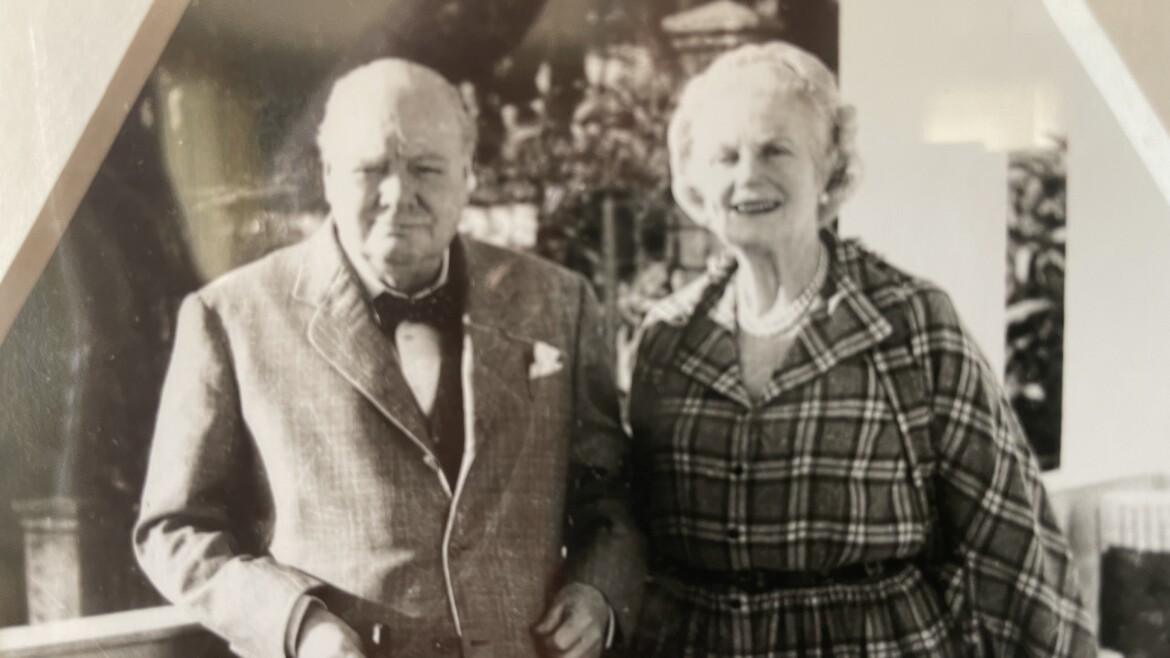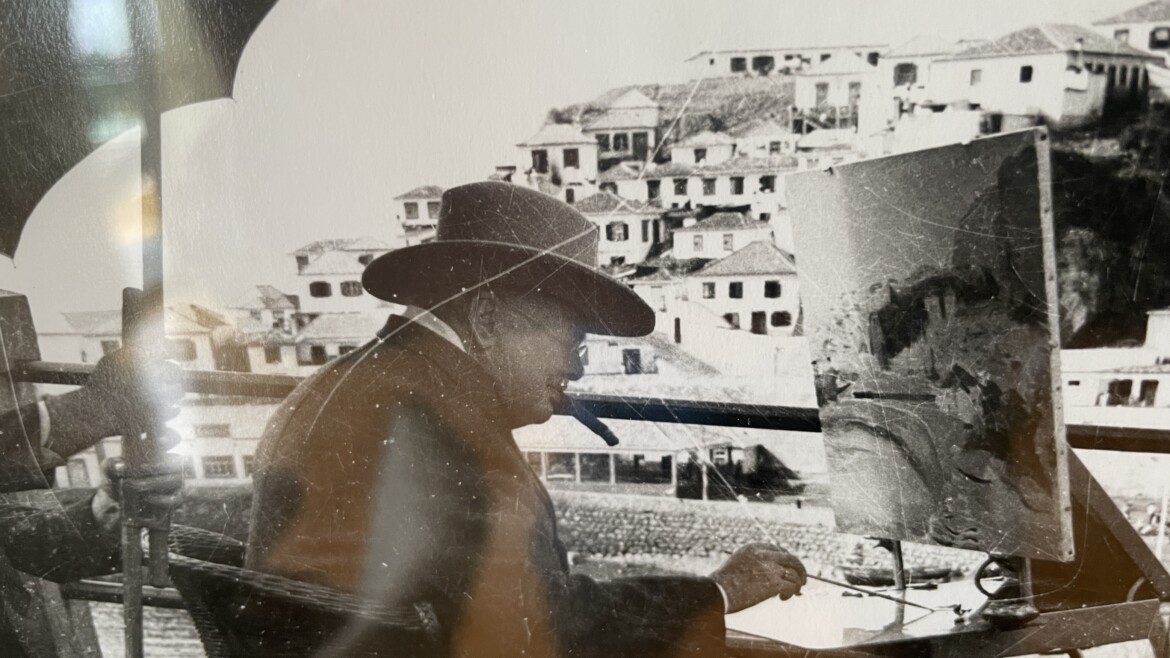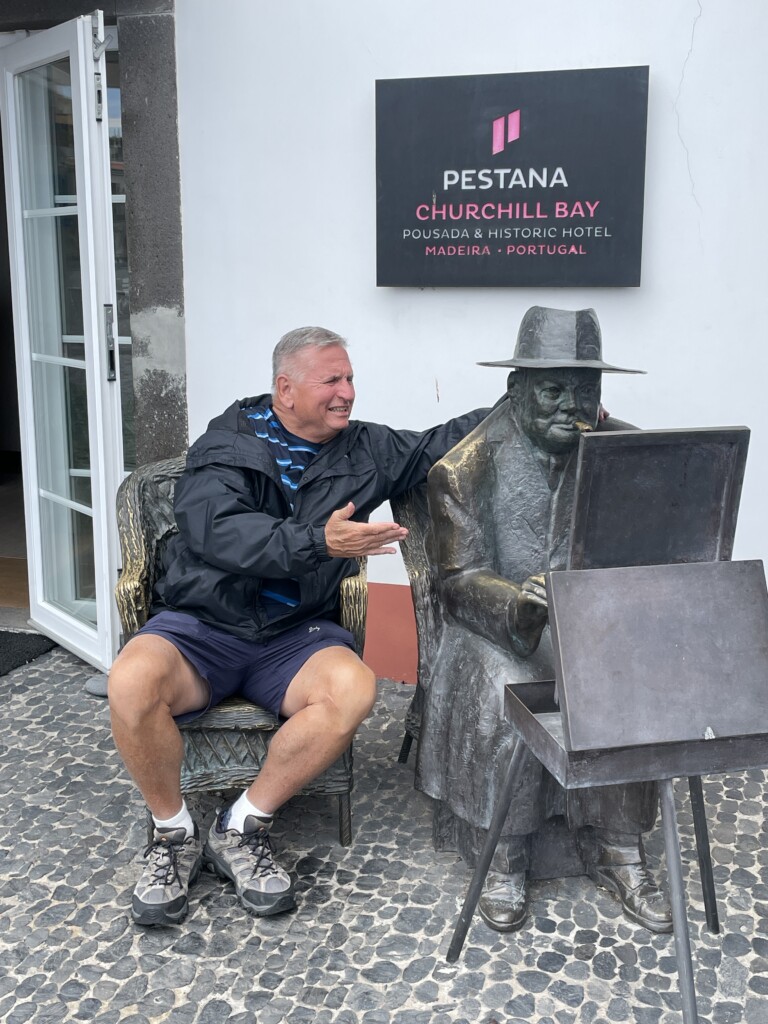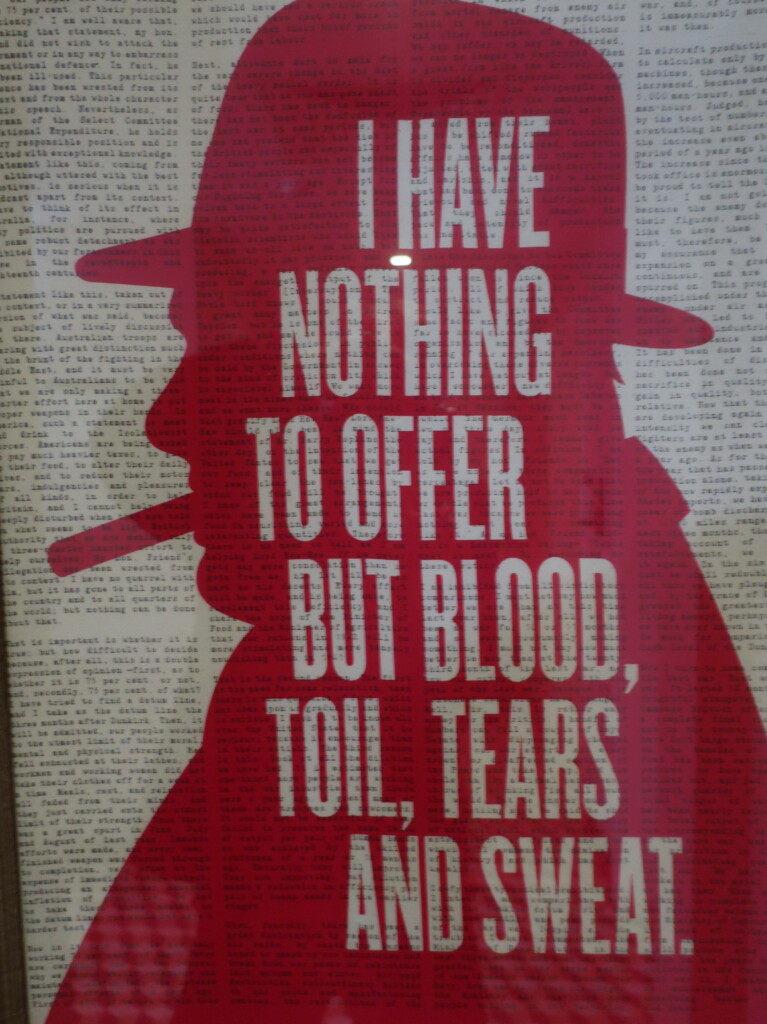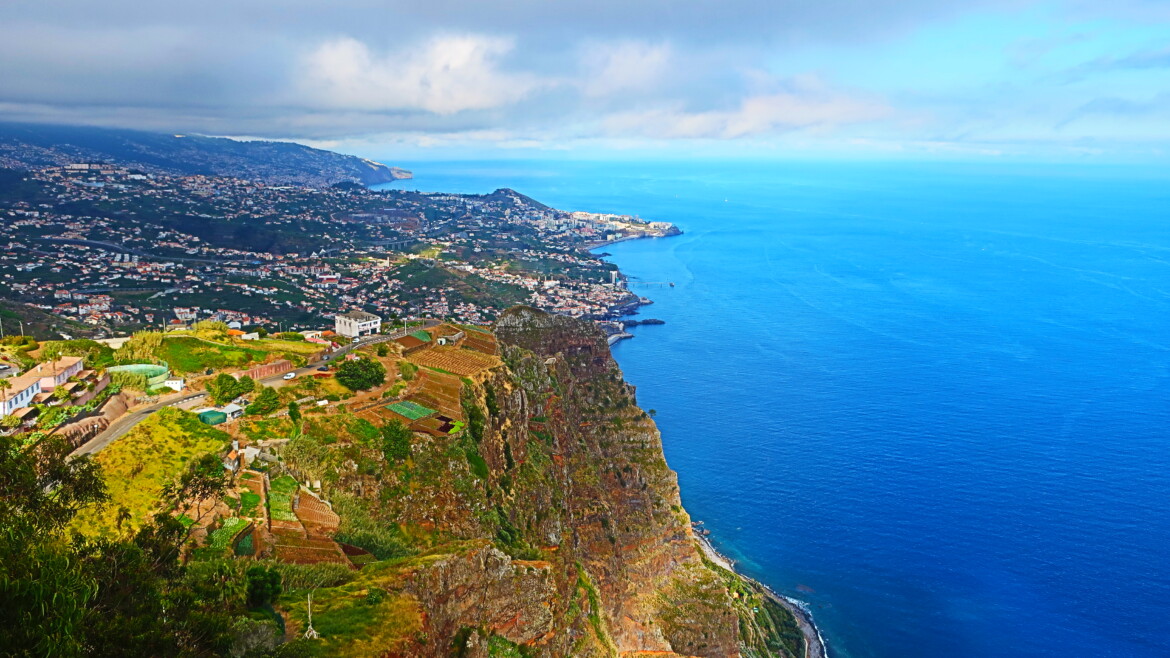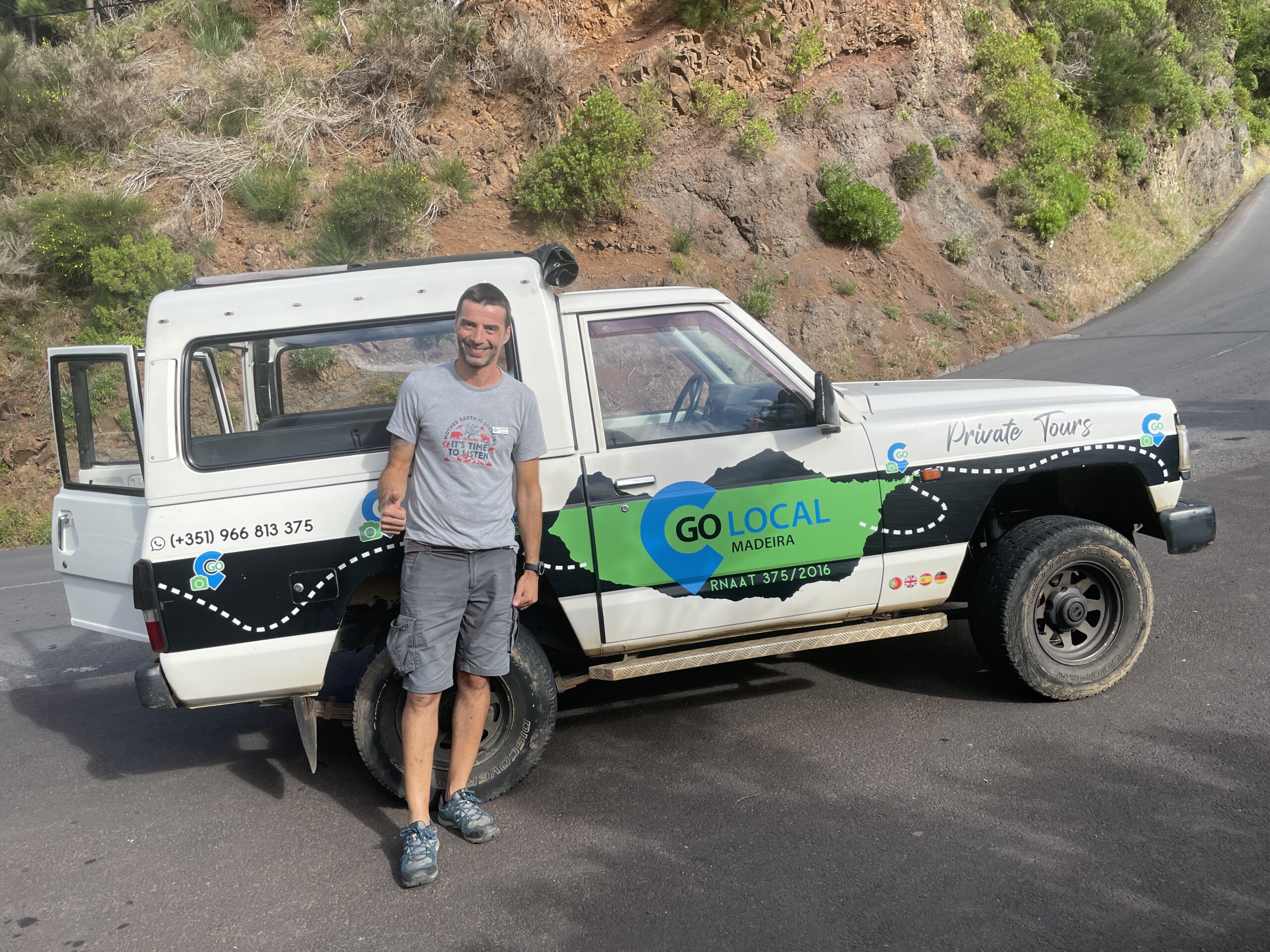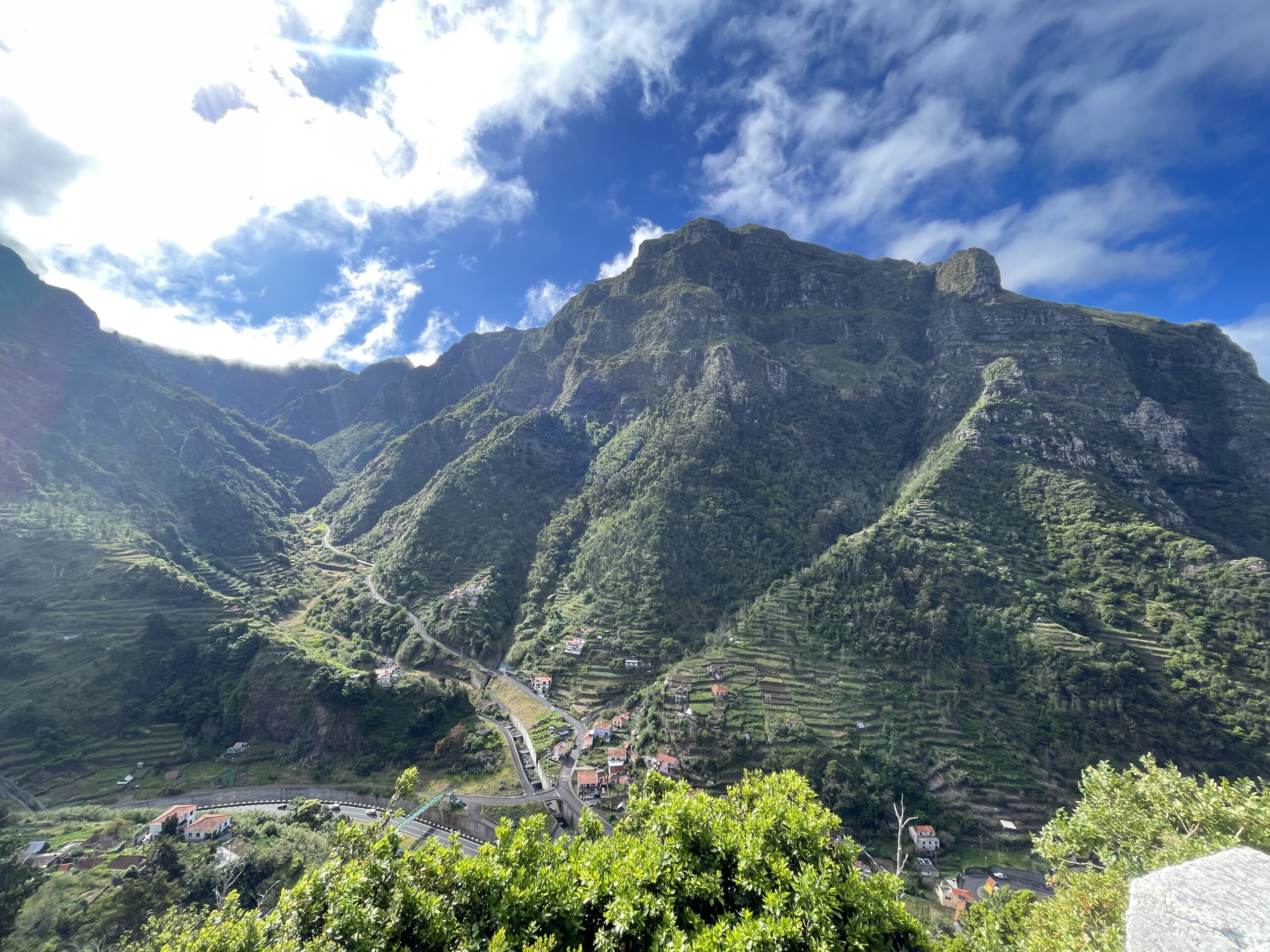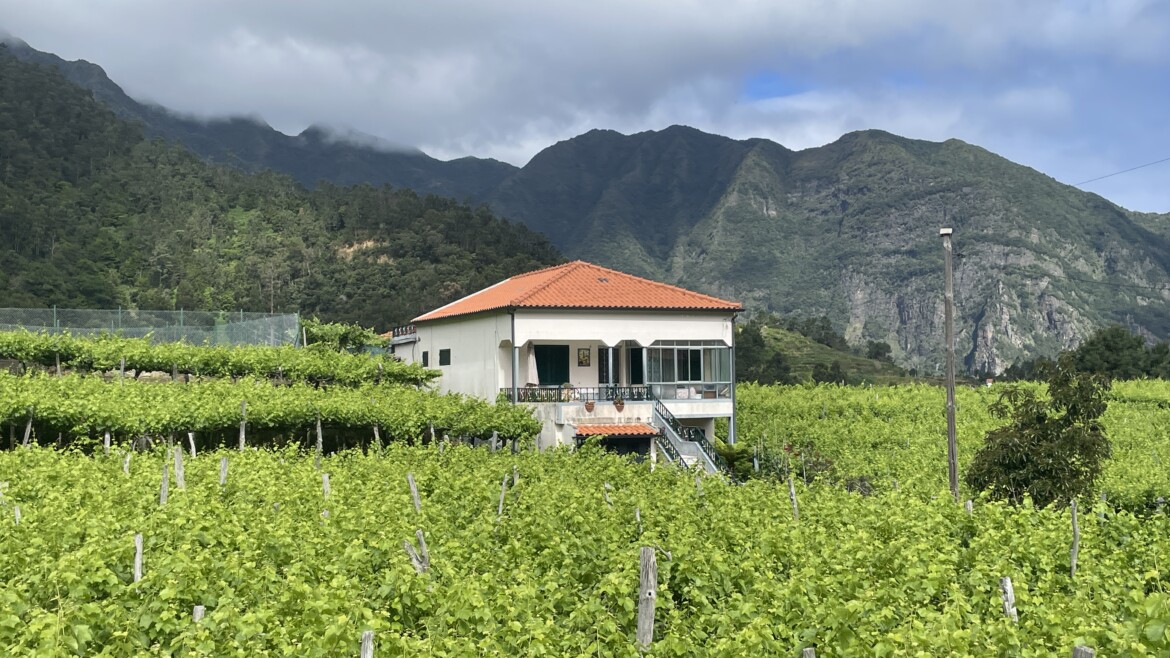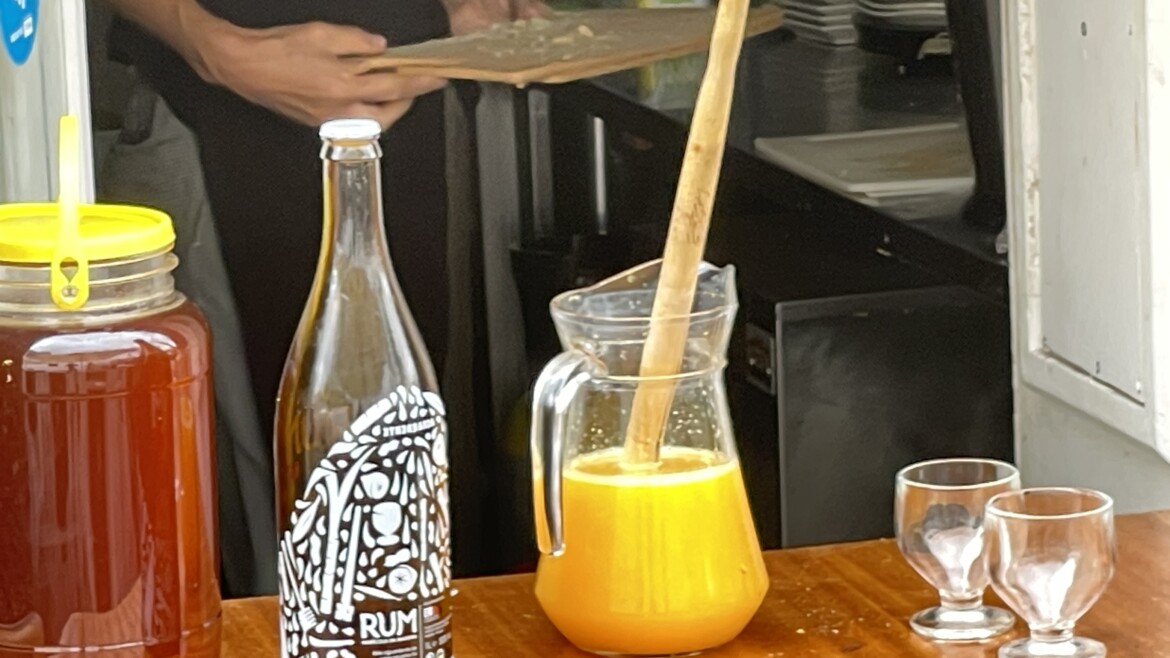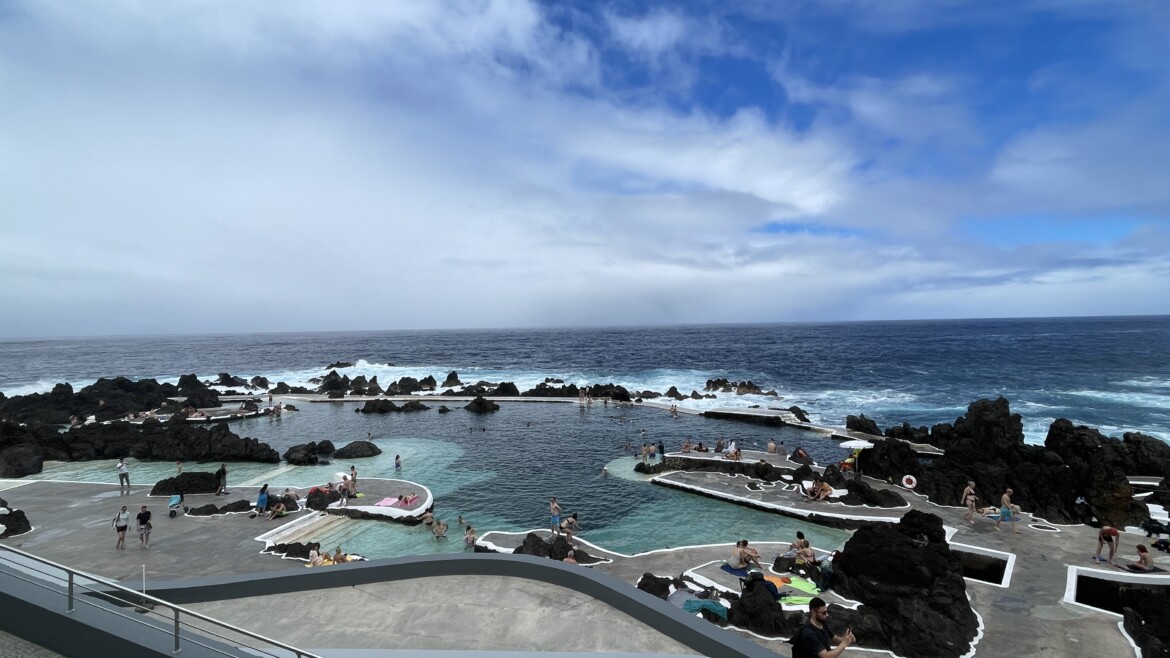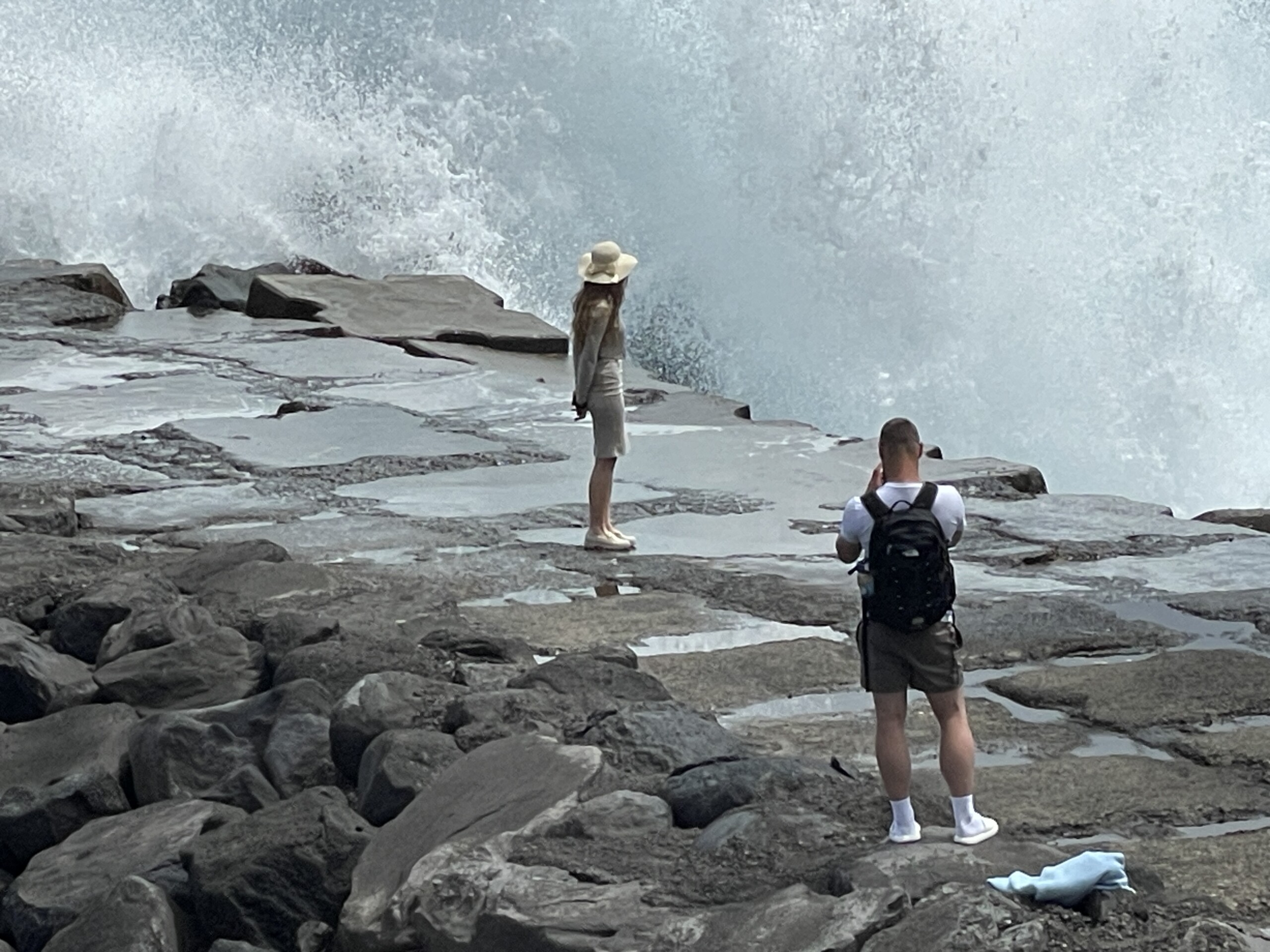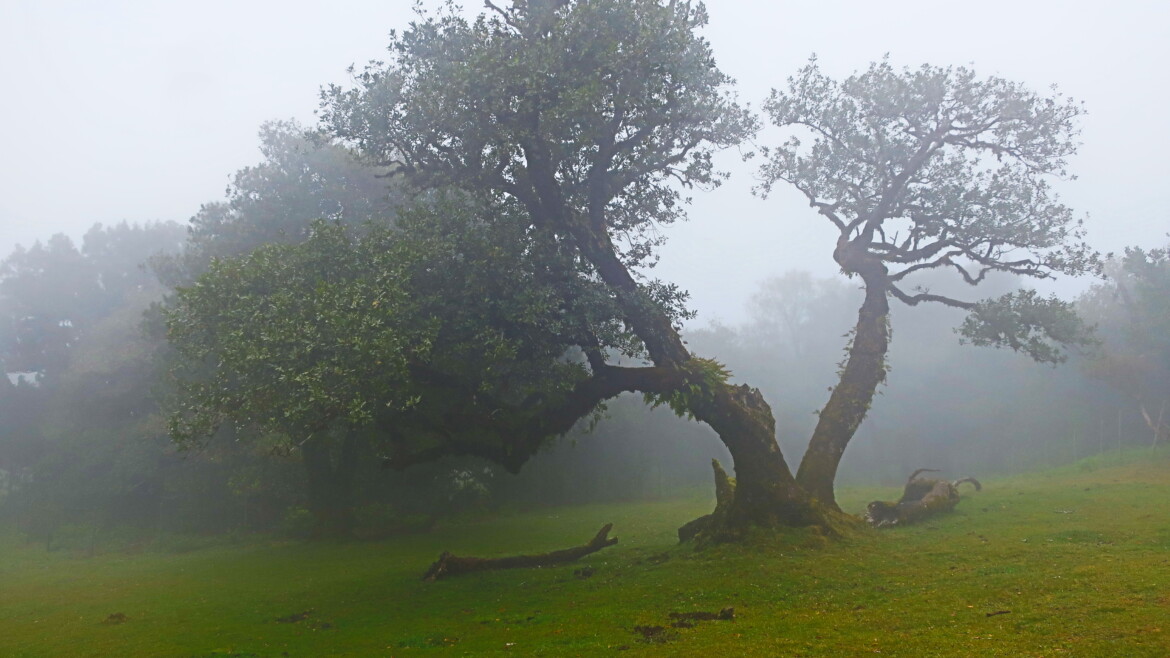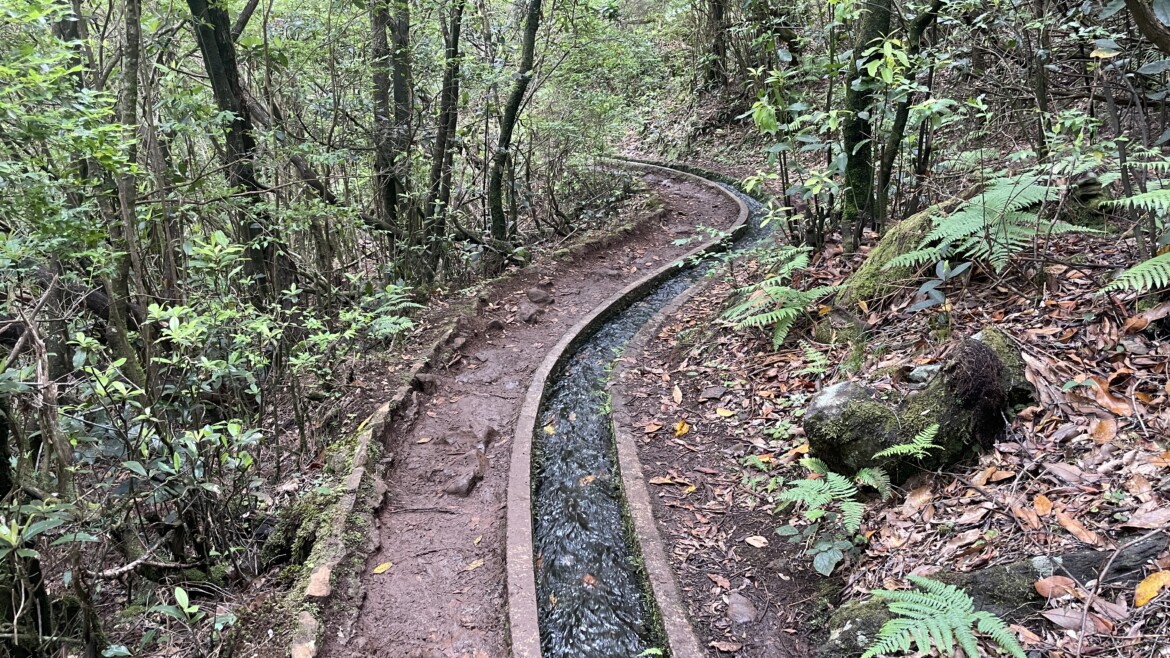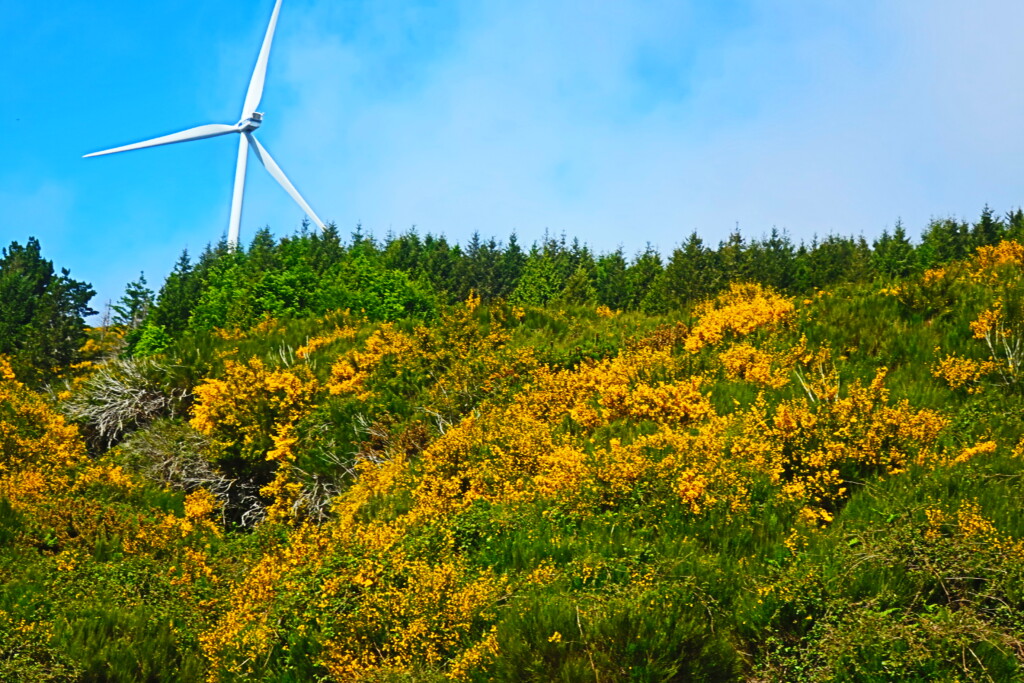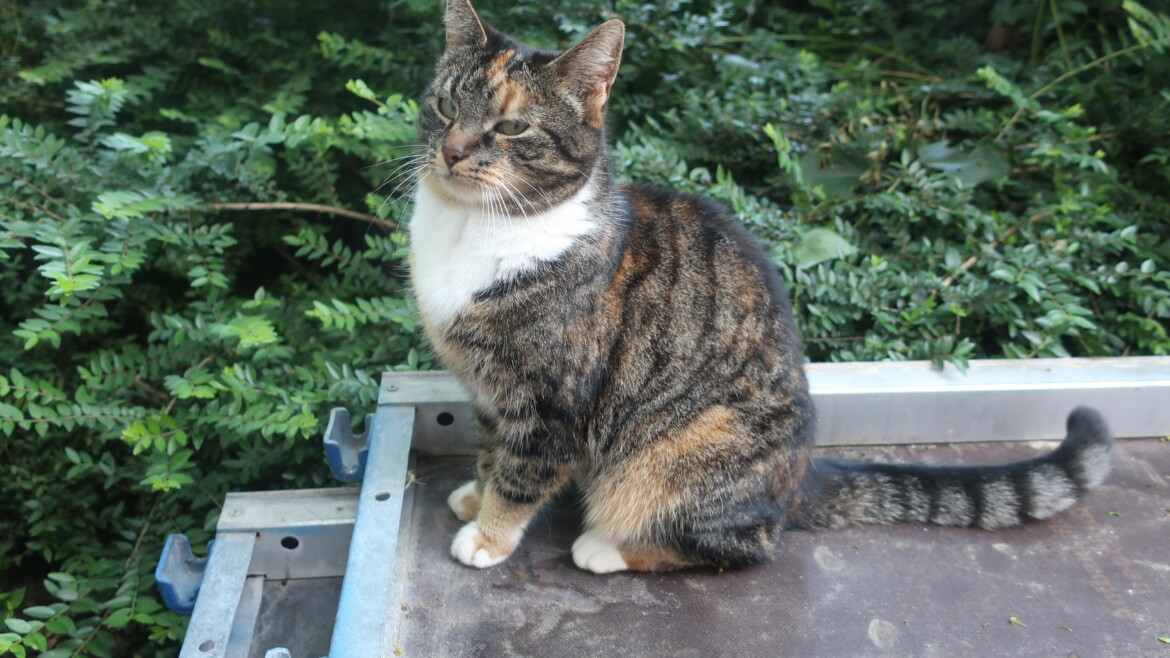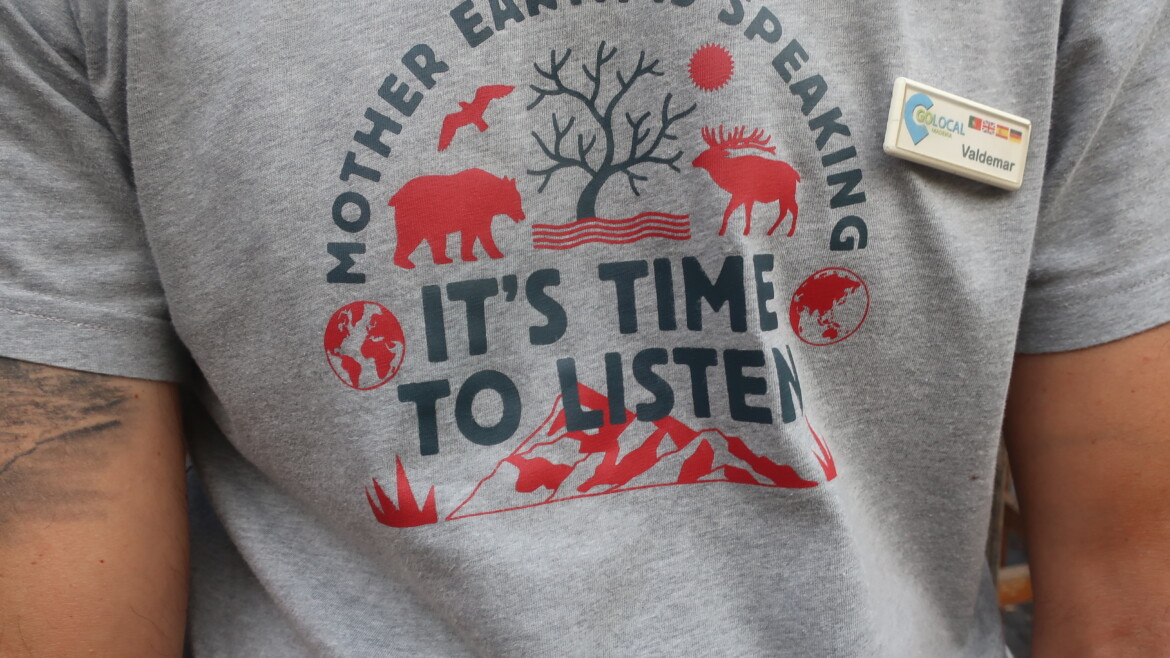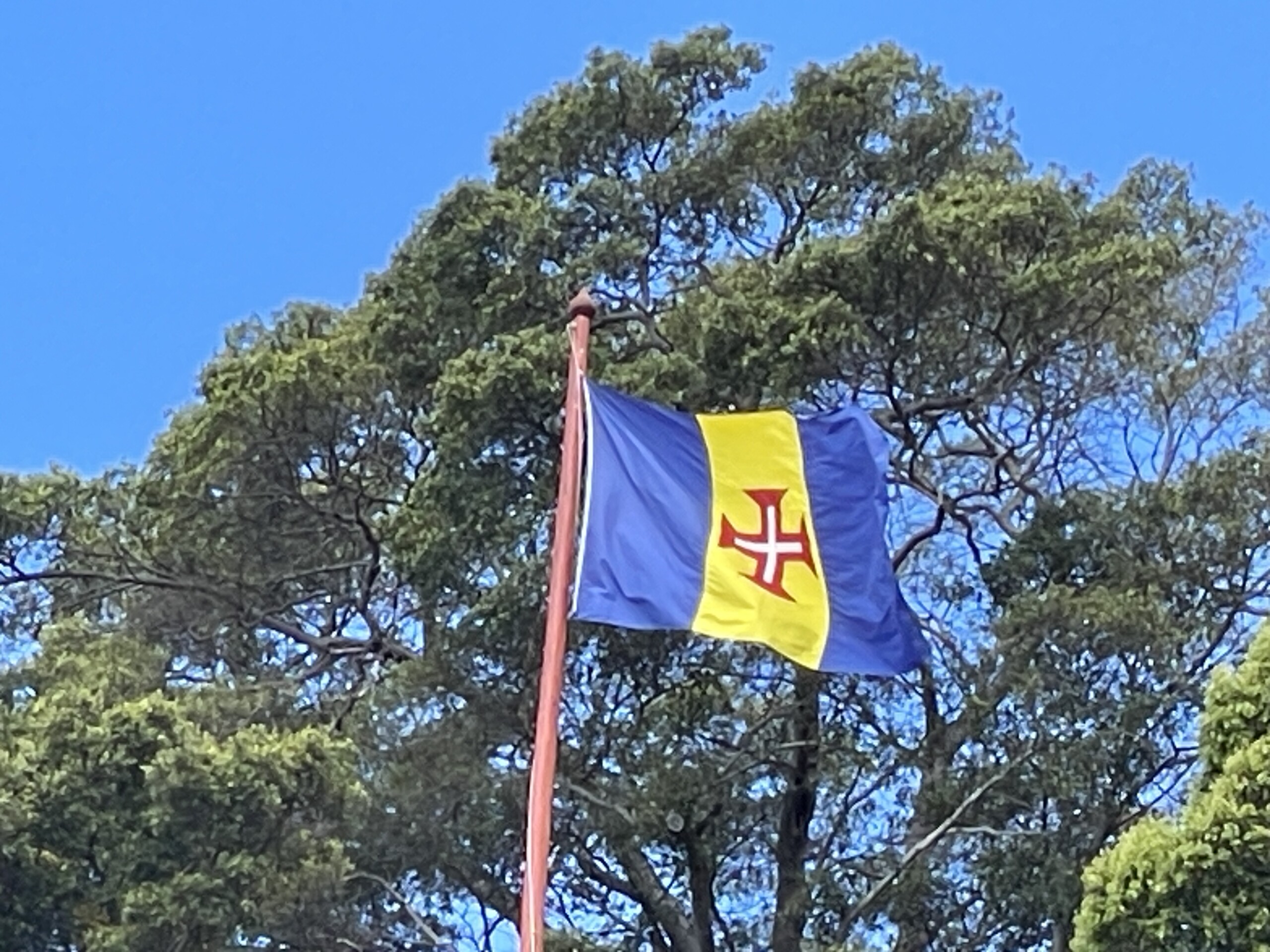
The Portuguese Island of Madeira is about 300 miles off of NW Africa, and over 600 miles from Lisbon. Even though Madeira is on the African Teutonic plates, culturally it is aligned with Portugal and Europe. Founded in 1420 by Portuguese explorers, there is evidence that the Vikings were there in 900AD.
As a tourist attraction, there is a galleon that sails almost every day.
My wife, Kathie, and I flew from Porto, Portugal via Lisbon to Madeira. The airport is famous for its windy conditions which presents interesting landings. People come out and watch.
Pilots have to take special training to fly into Cristiano Ronaldo International Airport—named after the famous soccer player born on the island.
Like a good number of airports in Europe, the plane lets you out on the tarmac.
.
A large number of people do rent a car at the airport.
Some people rent campers.
The roads are well constructed to get you where you want to be.
There is just over 250,000 people who call Madeira home. This island that is about 35 miles long and nearly 14 miles wide. It takes about 4 hours to circle the island, but in-between are many areas to hike and explore.
There are over 7 peaks 5000 feet or higher. The mountains, like Hawaii, literally come down to the sea.
There is an abundance of flowers on each island. The ocean, though, is about 7 degrees cooler in Madeira than Hawaii. Then, too, there are very few sandy beaches like Hawaii. The Hawaiian white sands radiate the intense ocean blue colors unlike Madeira.
There are numerous ways to travel the 12 miles from the airport to the major city of Funchal. We decided to take the taxi.
Our home for 7 nights was the Royal Savoy Ocean Resort. A deluxe 5-Star accommodation along the Atlantic Ocean and a short walk to Madeira’s largest city, Funchal.
We had a spectacular view of the pool and ocean.
We loved the breakfasts. Eggs were cooked to order. Although the chef I could tell did not like her picture taken.
The patrons to this hotel are mainly British tourists. For whatever reason, we started talking to the man adjacent from our table. Nils Mortensen is from Norway. In a short time, he became a dear friend. At 83, Nils is fully alert and has a liver and kidneys of a young person. I attribute this great health from his eating Minke whale meat once or twice a year.
Nils once owned 43 International offices across the globe selling medical equipment and supplies. As a child he remembers seeing German soldiers during WWII. He studied philosophy in college. With his white hair Nils looks like Santa Claus and a dear grandfather all rolled up in one. He and his wife, Audrey, live part time in Singapore to escape the cold Norwegian winters.
Half the population live in Madeira’s largest city, Funchal. There are a number of parks, round-abouts and a harbor front to explore.
Like Lisbon and Porto, Madeira’s streets are lined with black and white limestone cobblestones.
In the old town there are a number of streets with elaborate wall art.
There are plenty of cafés to enjoy.
One of my favorite meals was going to an Indian Restaurant that served spicy shrimp with Peri Peri sauce.
Gelato is a favorite dessert.
There are also a number of picturesque churches both in Funchal and surrounding areas.
A public beach is near an old-time fort.
Our visit to Madeira was in May of 2024 during their Flower Festival.
Blue Jacaranda trees, imported from South America, can be seen throughout the city.
One of the central points is seeing the market area.
One of the highlights of the city is to take the Funchal Cable Car to Monte Palace and Gardens. It takes 15 minutes to travel 3,200 meters (about 2 miles) up to the gardens.
These famous gardens are an eclectic combination of gardens, waterfalls, art museum, bird sanctuary, sculptures and even a mineral museum. There are plants and trees from around the world that can exist in this subtropical and microclimates.
The Chinese sculptures bring color to the surrounding gardens.
The awesome views can be seen by the Palace.
We found the “Girl with Skipping Rope” by James Butler (bronze 1987) to be an interesting piece of sculpture by the Palace.
The artwork in one museum we found entertaining.
If you continue down the slope, there are a few Santana homes—triangular and colorful houses– which are unique to Madeira in a small town called “Santana.”
Viewing the Monte Gardens will take a few hours. We recommend coming up another day to do the Botanical Gardens which are on the other side of the valley via the cable car. We recommend taking a bus or taxi up to see the Botanical Gardens as it does make it a long day to see both gardens. The Botanical Gardens does have an interesting and colorful bed of plants in a decorative design that should not be missed.
In Funchal, taxi’s can take you around on an island tour.
It is highly recommended that one takes a Hop-on-hop-off bus tour of the city and surrounding region.
One of our favorite stops was Camara de Lobos Harbor. This small town is blessed with small fishing boats and flowers.
In our short visit to this seaside village, we encountered men playing a game of cards.
This village is also where Winston Churchill would paint. His preferred hotel was Reid’s Palace close to our Hotel Savoy.
Not far from Camara de Lobos is one of the highest cliffs in Europe, Cape Girao. It is nearly 2000 feet high. There is a glass skywalk that juts out from the cliff. If you are afraid of heights, this is not the place to be.
One of our highlights while visiting Madeira was taking a guide from Tours By Locals. We selected Valdemar A.. We toured mainly the northern middle of the island. Val took us to an area where his dad once farmed.
There are a number of waterfalls on the island.
Val did share with us the experience of drinking Madeira’s famous traditional local beverage called Poncha. It is made with alcohol made from distilled sugar cane juice, honey, and orange or lemon juice. It was developed in the 16th century to prevent scurvy.
On the northern part of the island are a number of swimming pools, i.e. volcanic holes.
On top of the ridge is the famous World Heritage site of Fanal Forest—mostly Laurel trees that are 500 years old. In the early morning fog permeates the area making your trek into an enchanting and mystical experience.
All through the mountain areas are man-made streams called “Levadas.” They make good hiking paths.
We also came across a large wind farm. There is an earnest attempt to get away from fossil fuels.
A week in Madeira was not enough. We missed seeing both eastern and western sides of the island. At the time of our visit, the Toboggan run that Ernest Hemingway made famous was not in operation. Thus, a second trip to Madeira is in planning stages. Madeira wasn’t Hawaii, but it is sure close.

